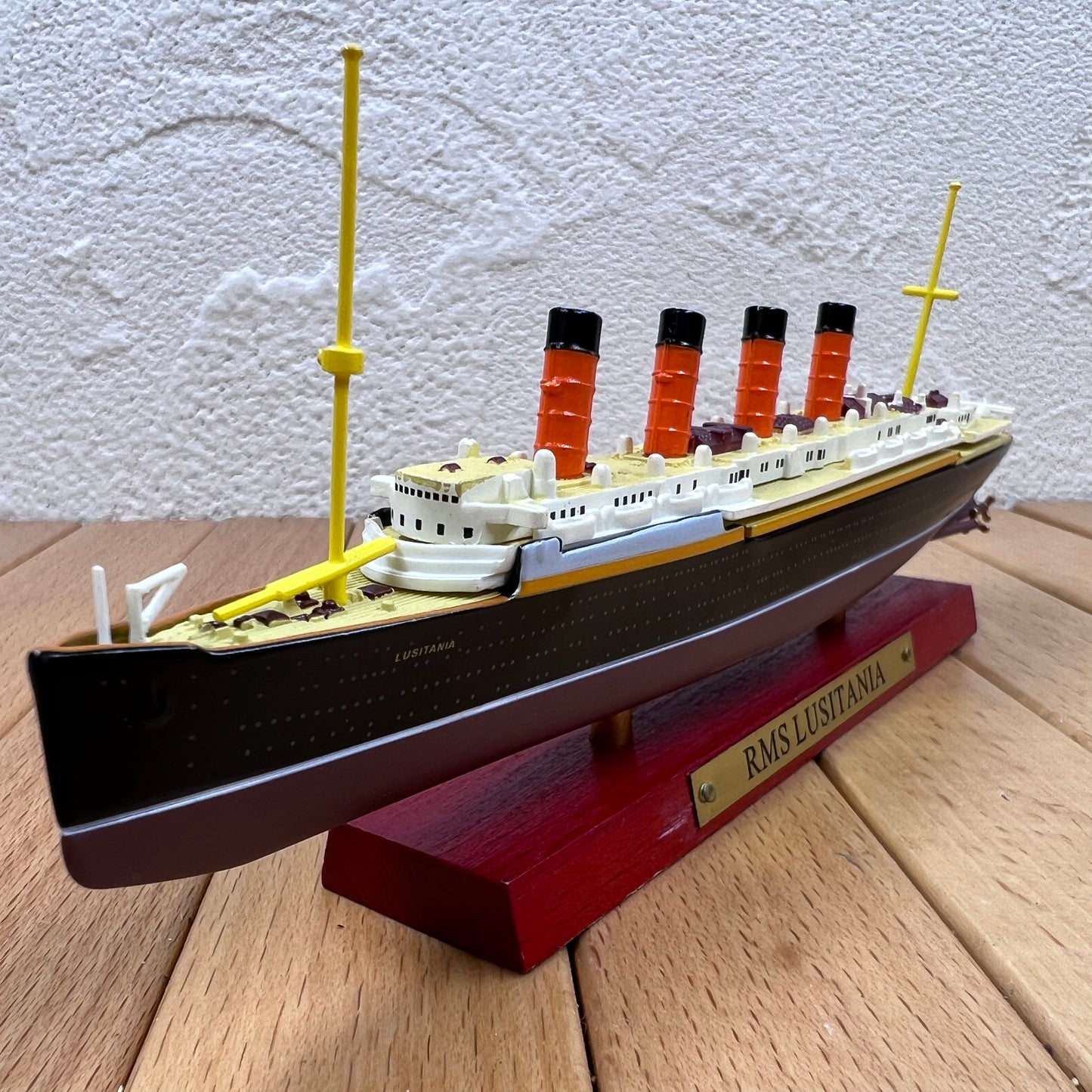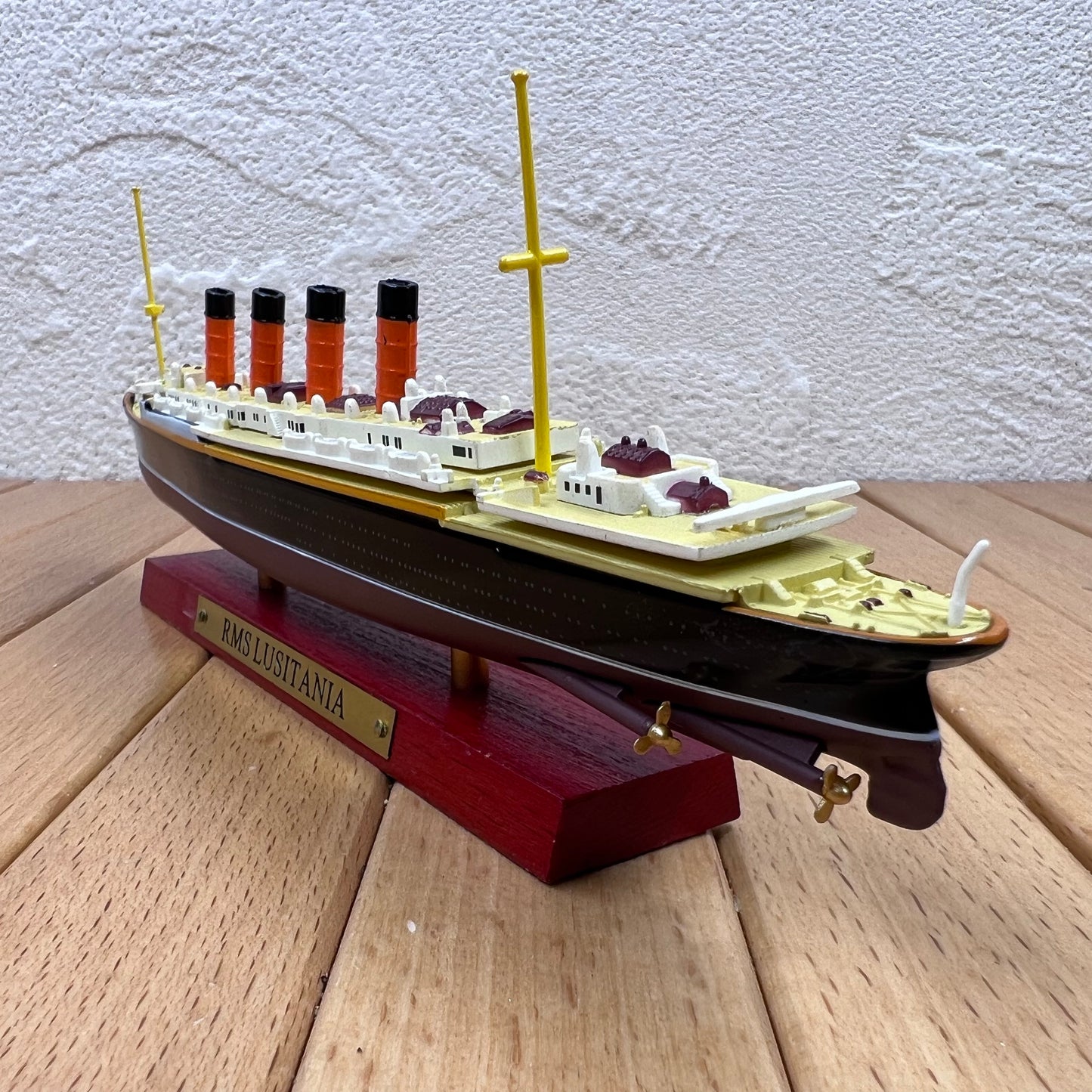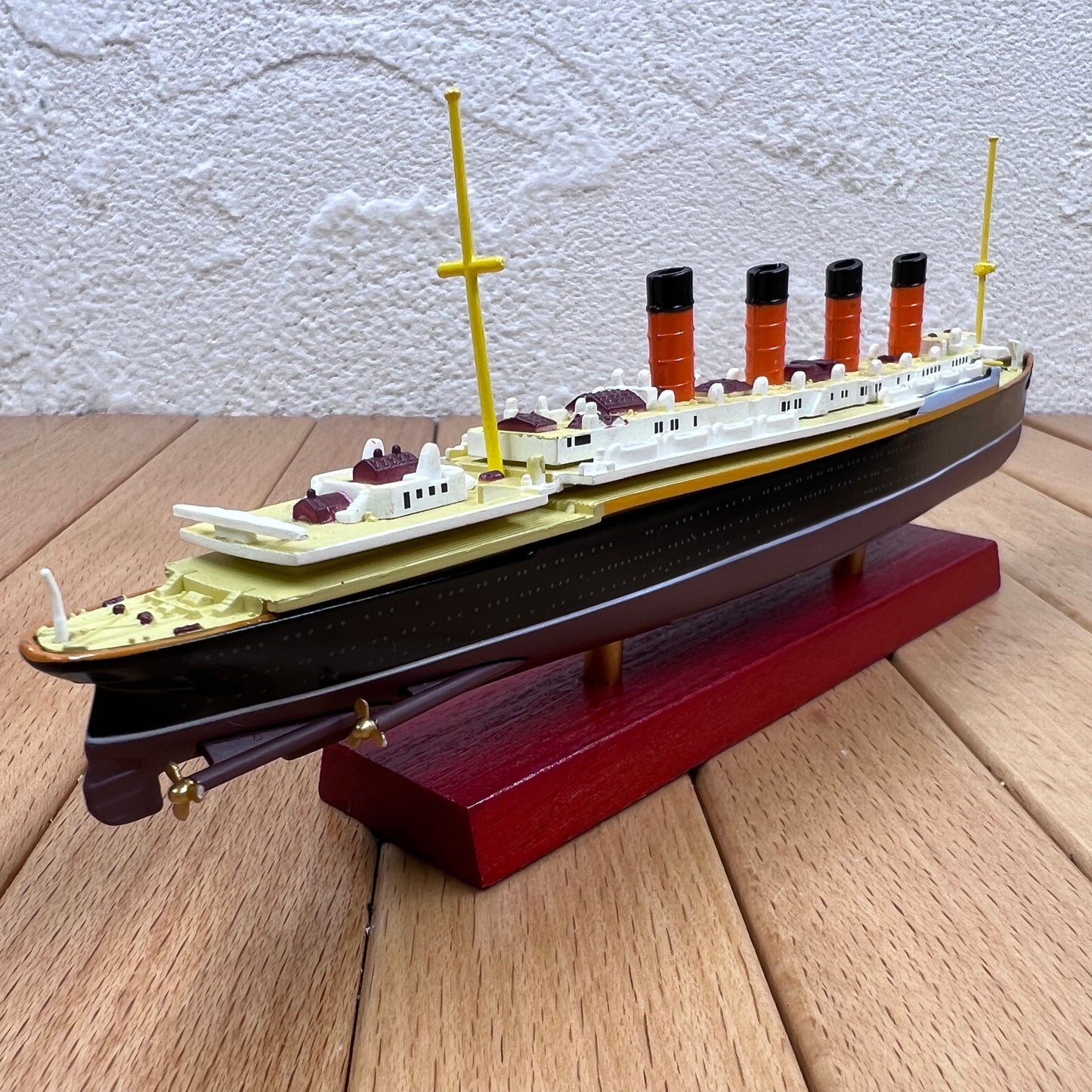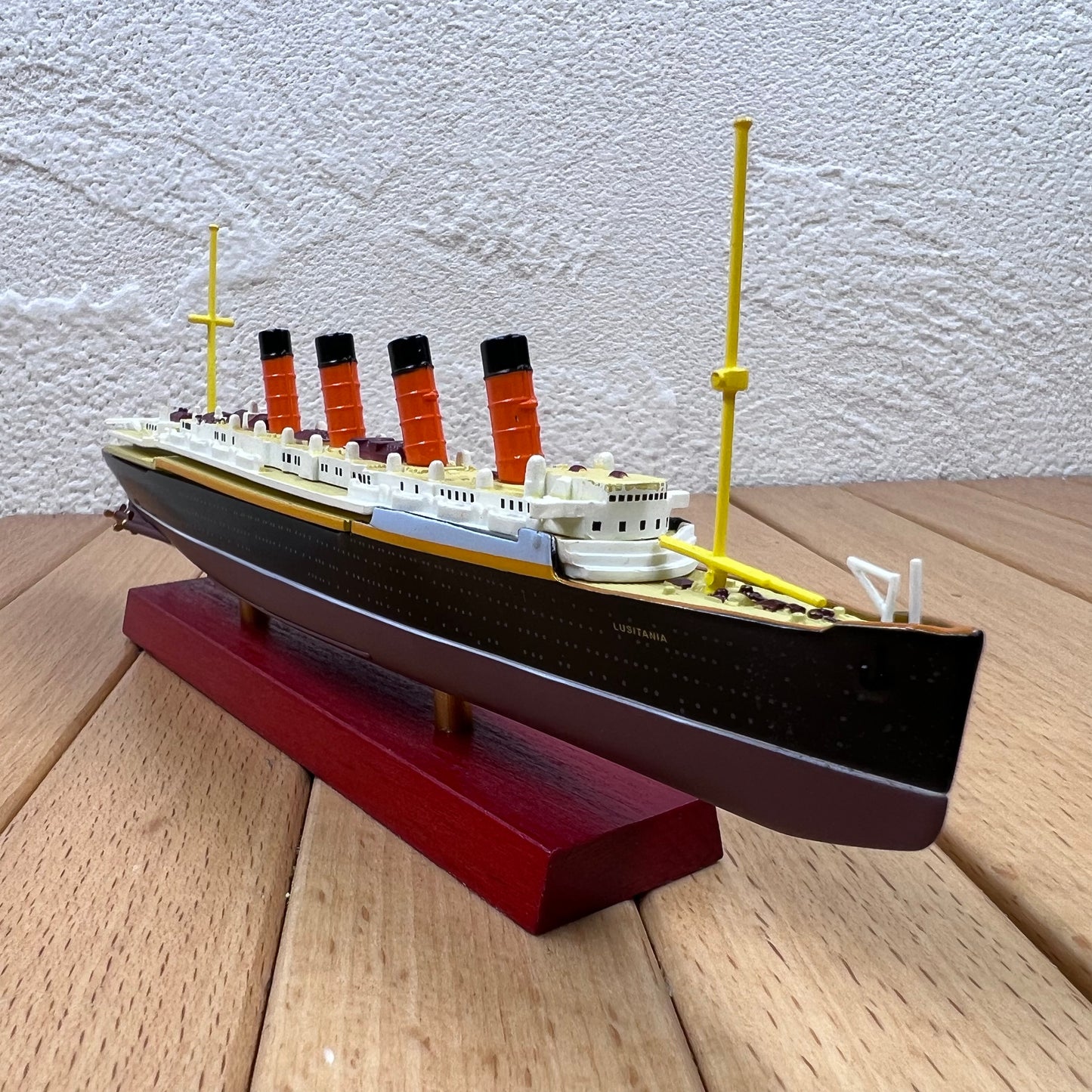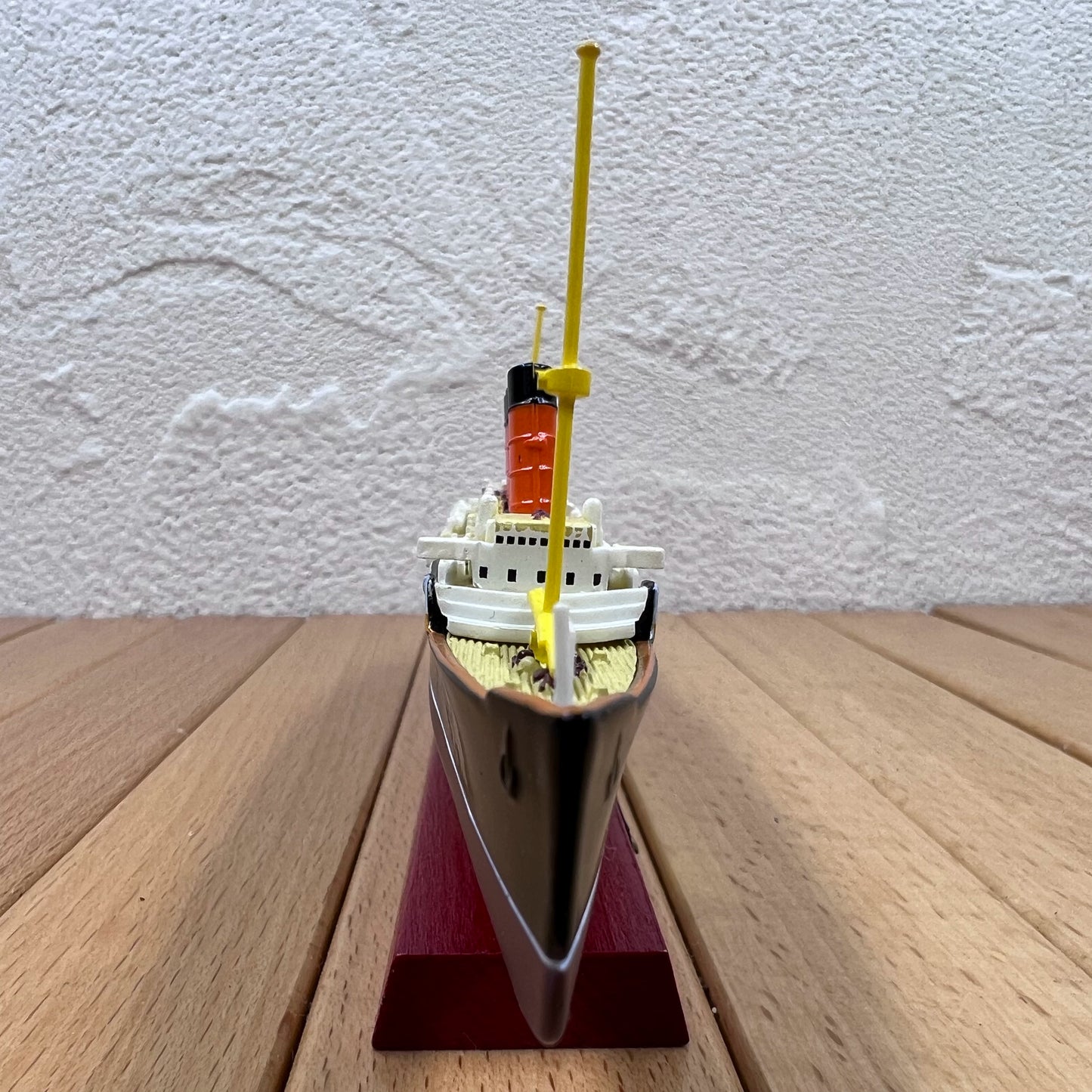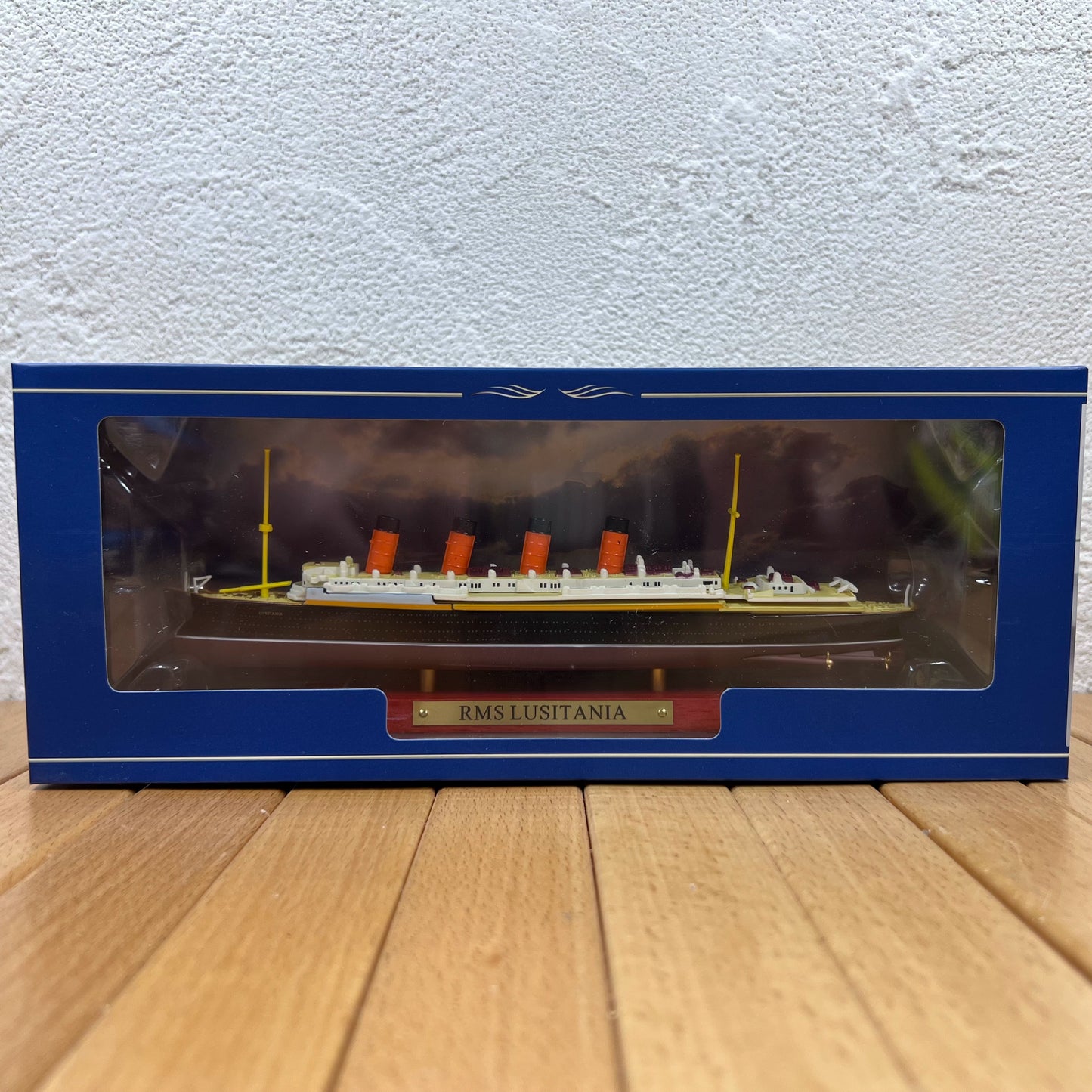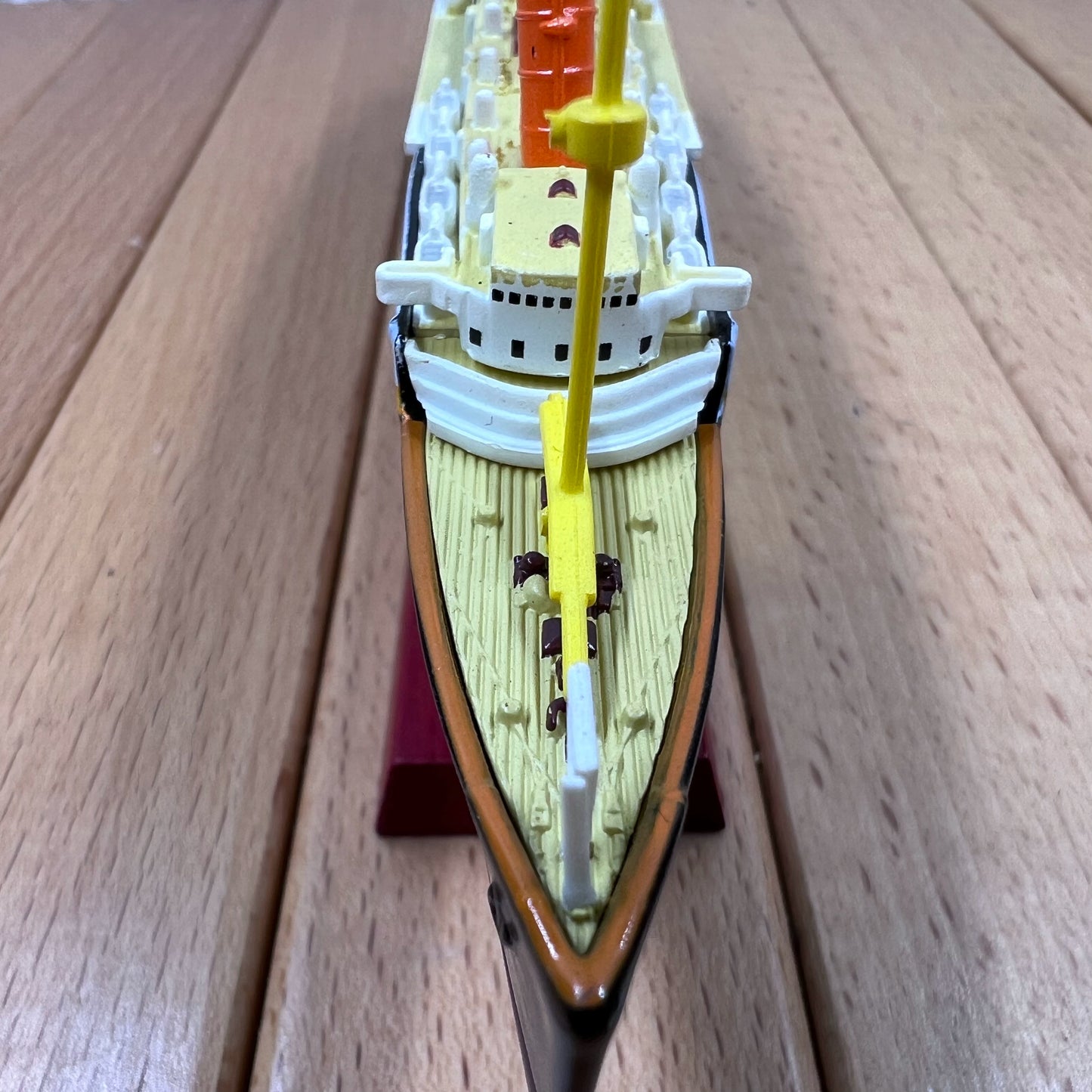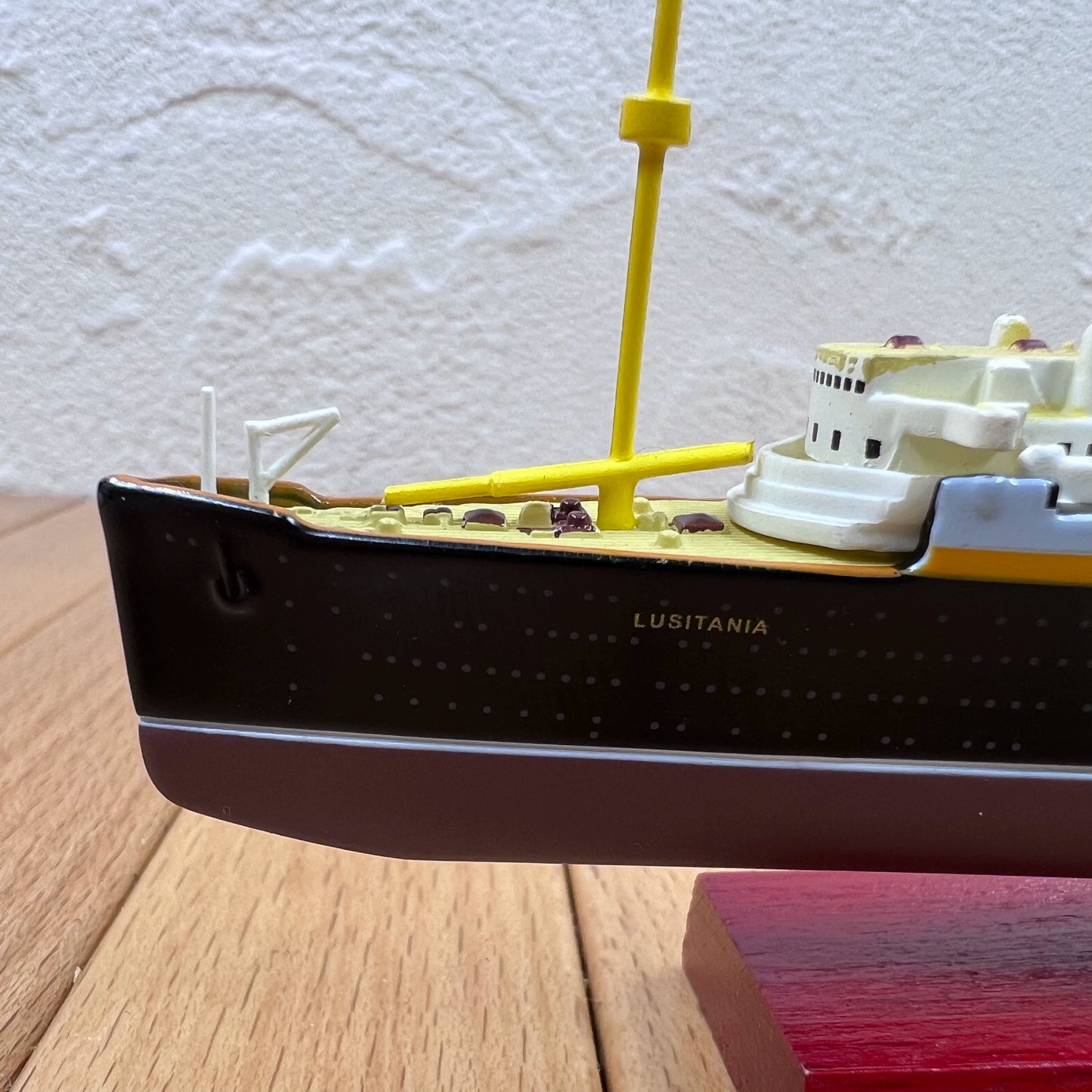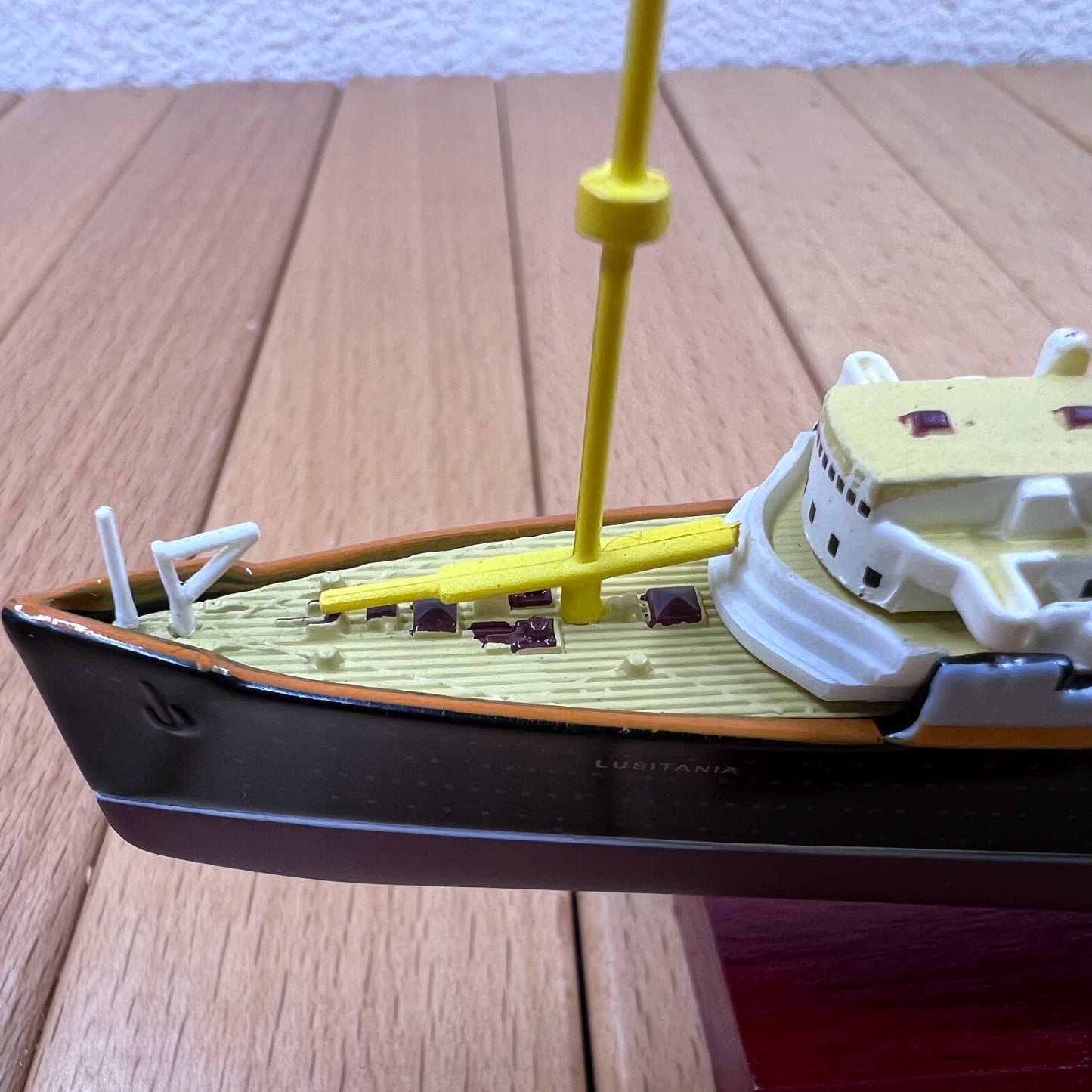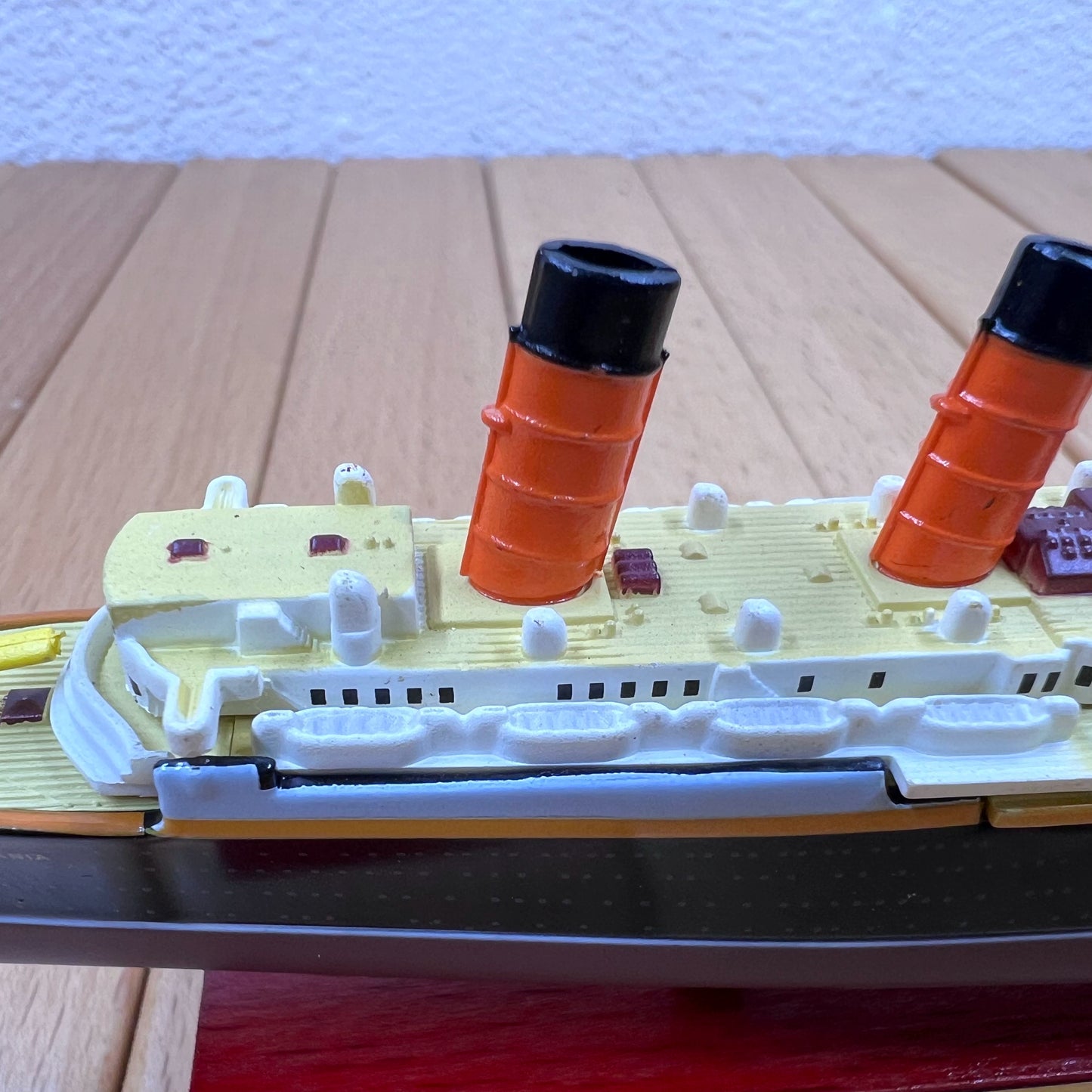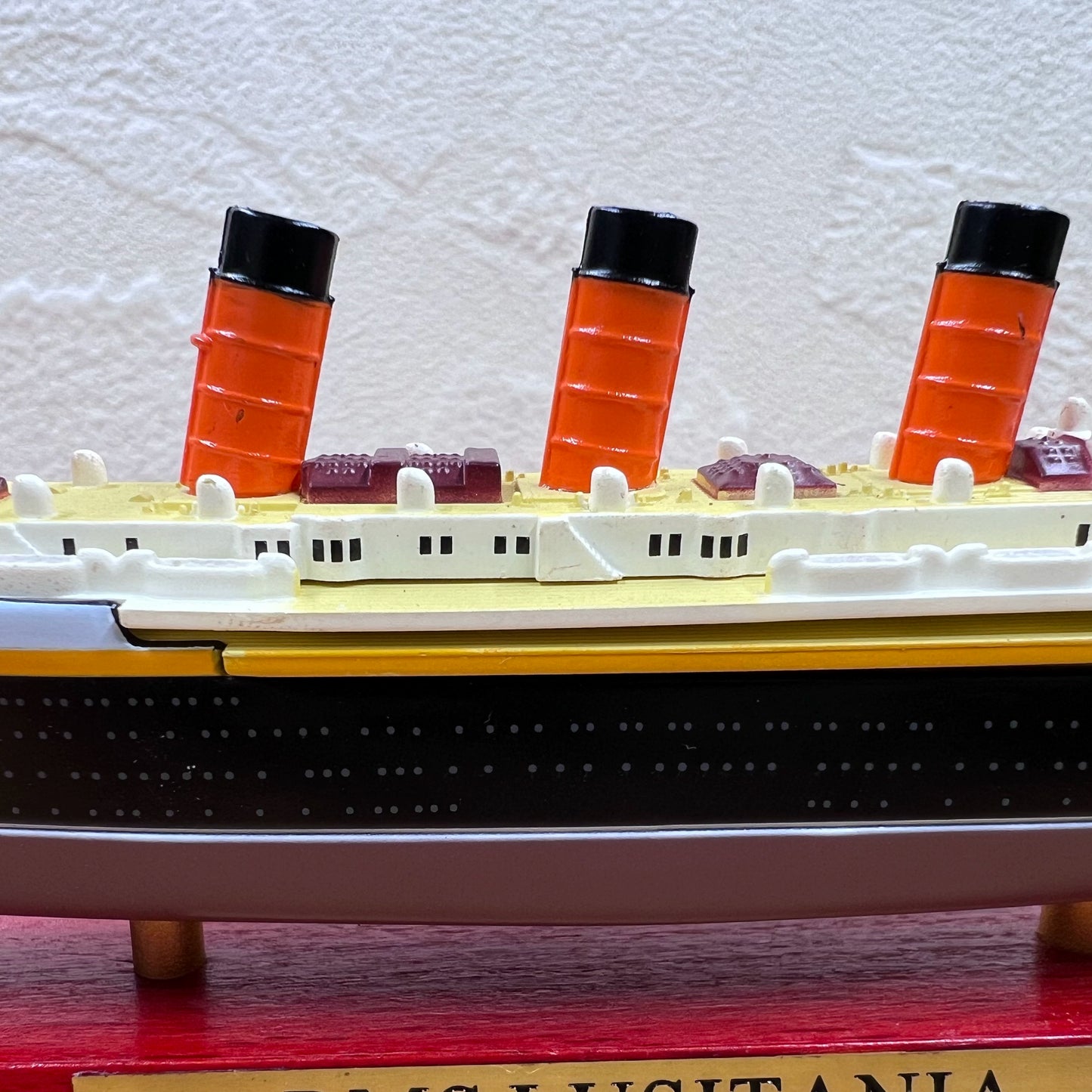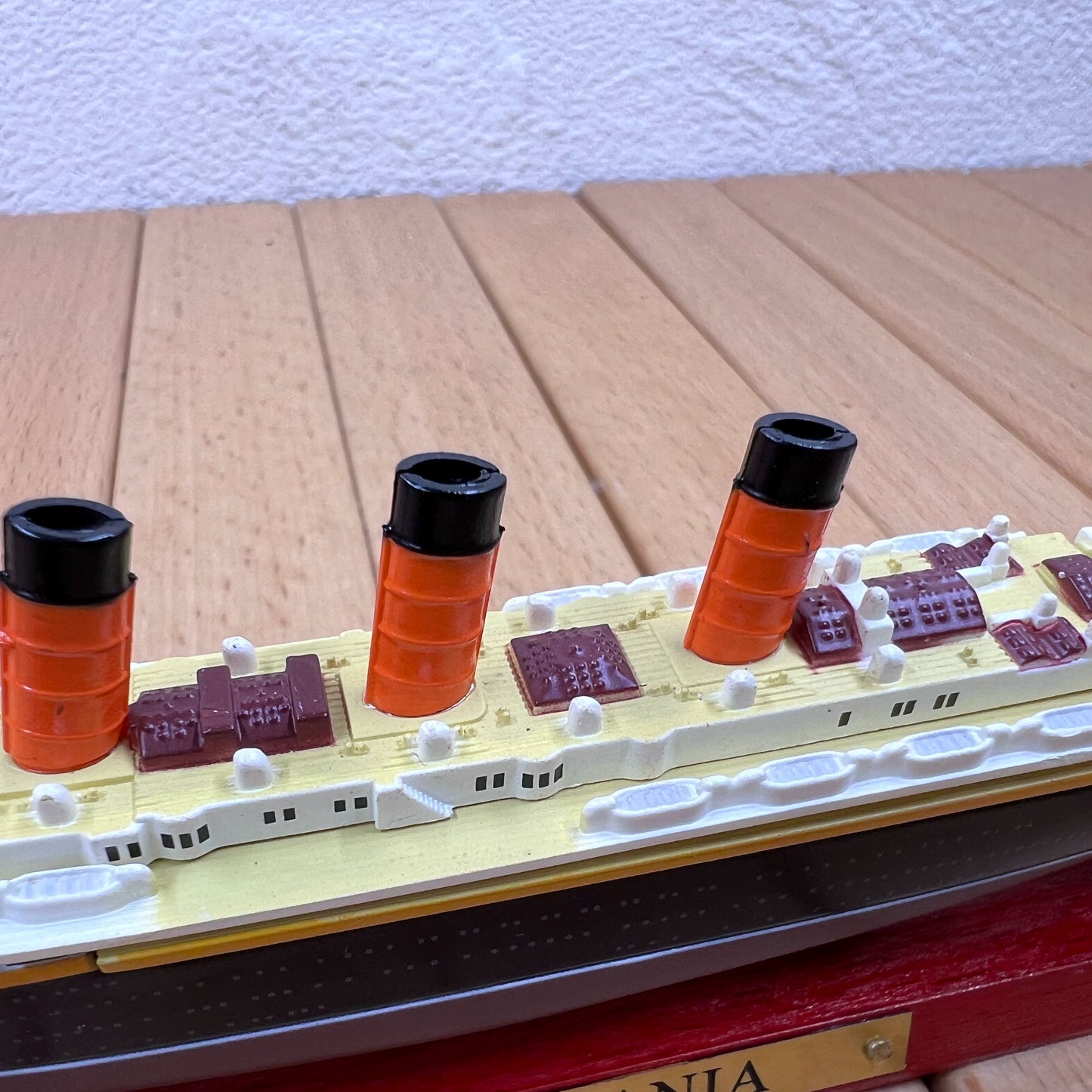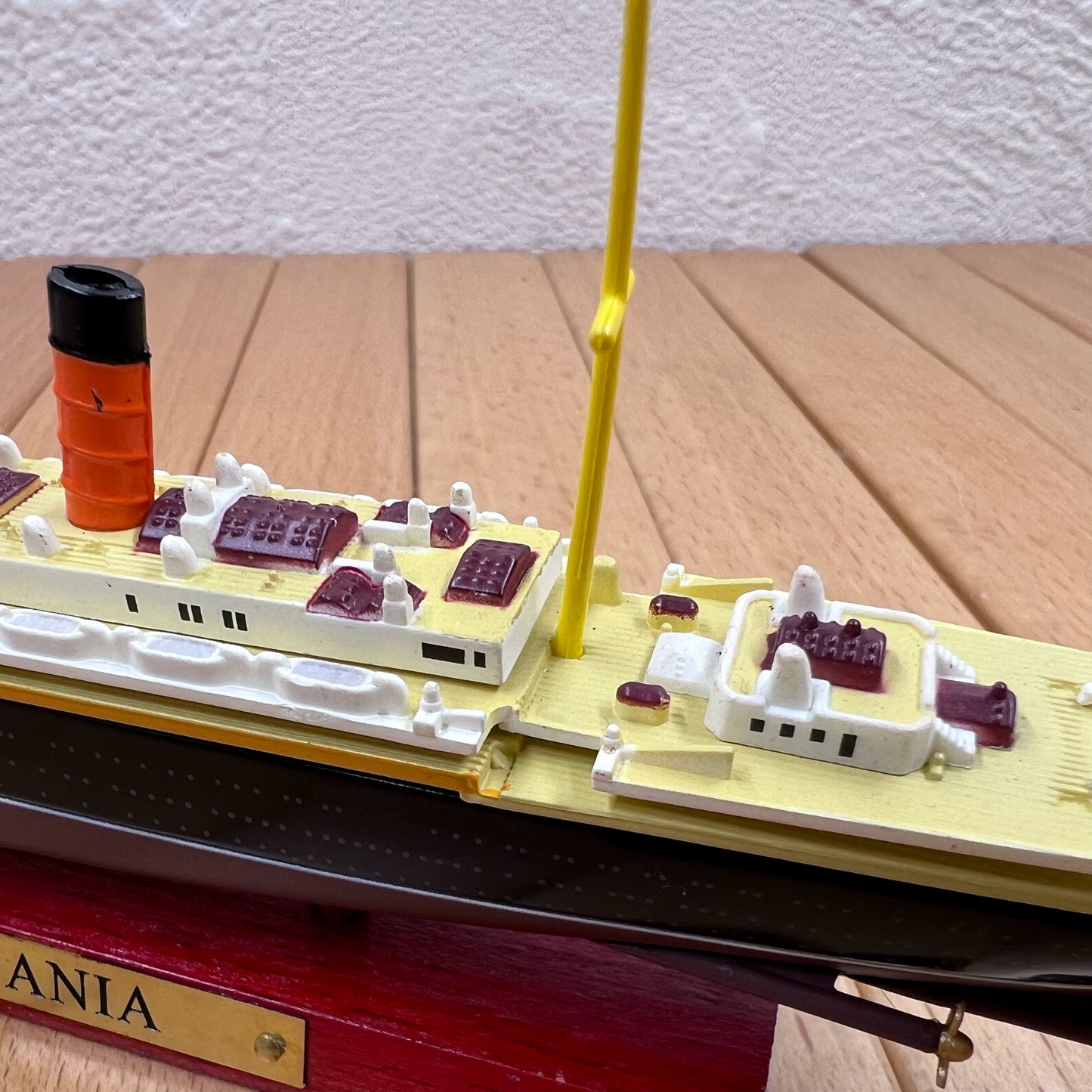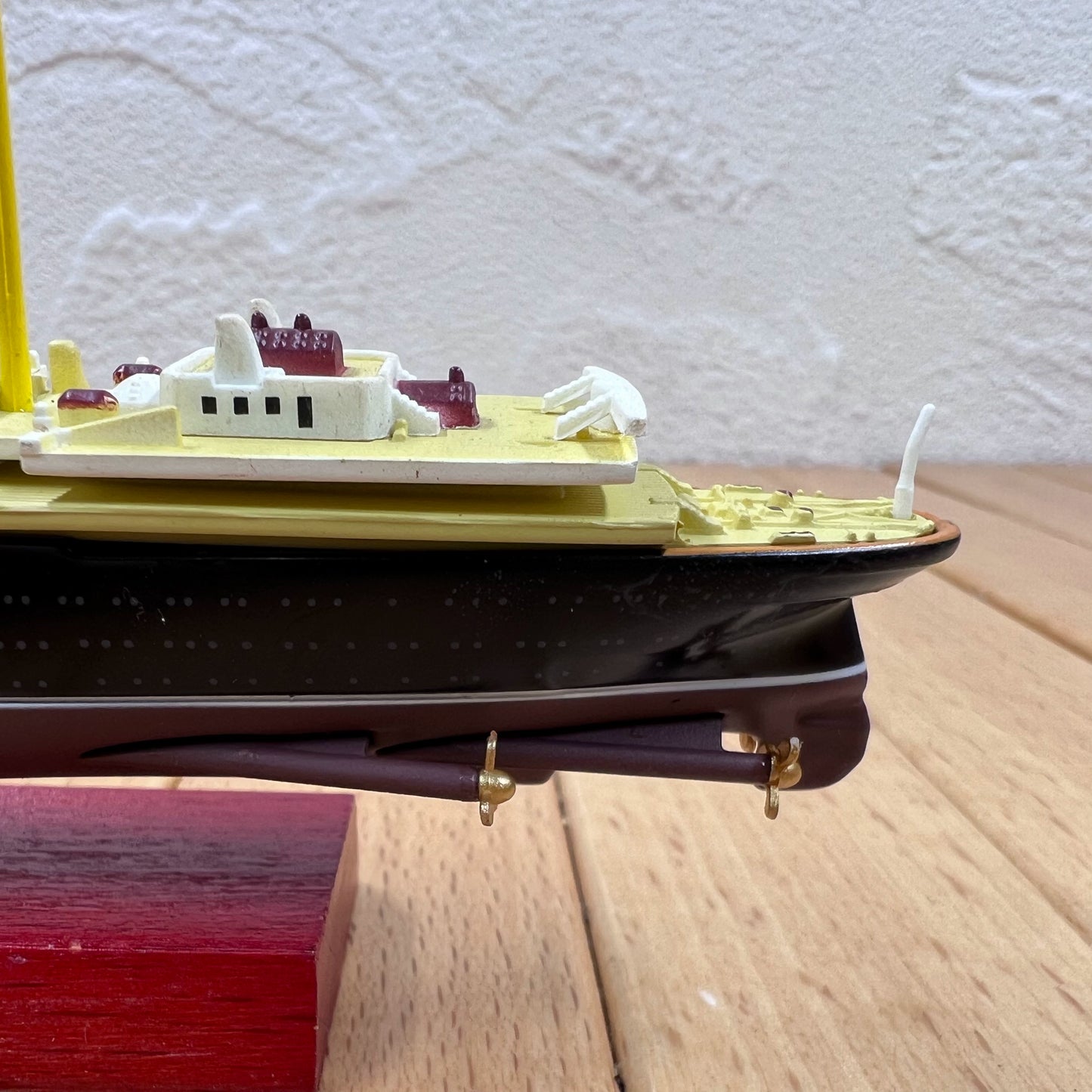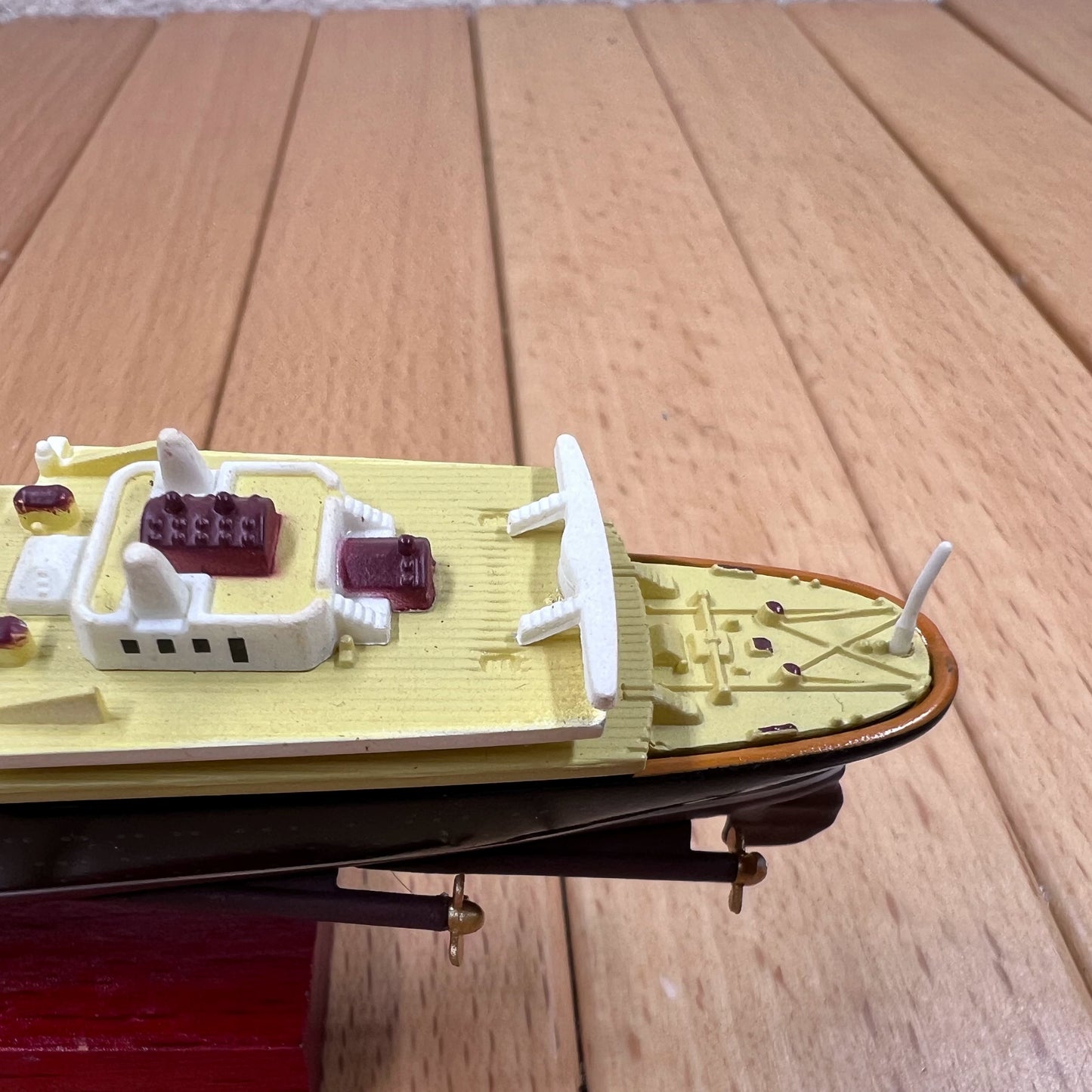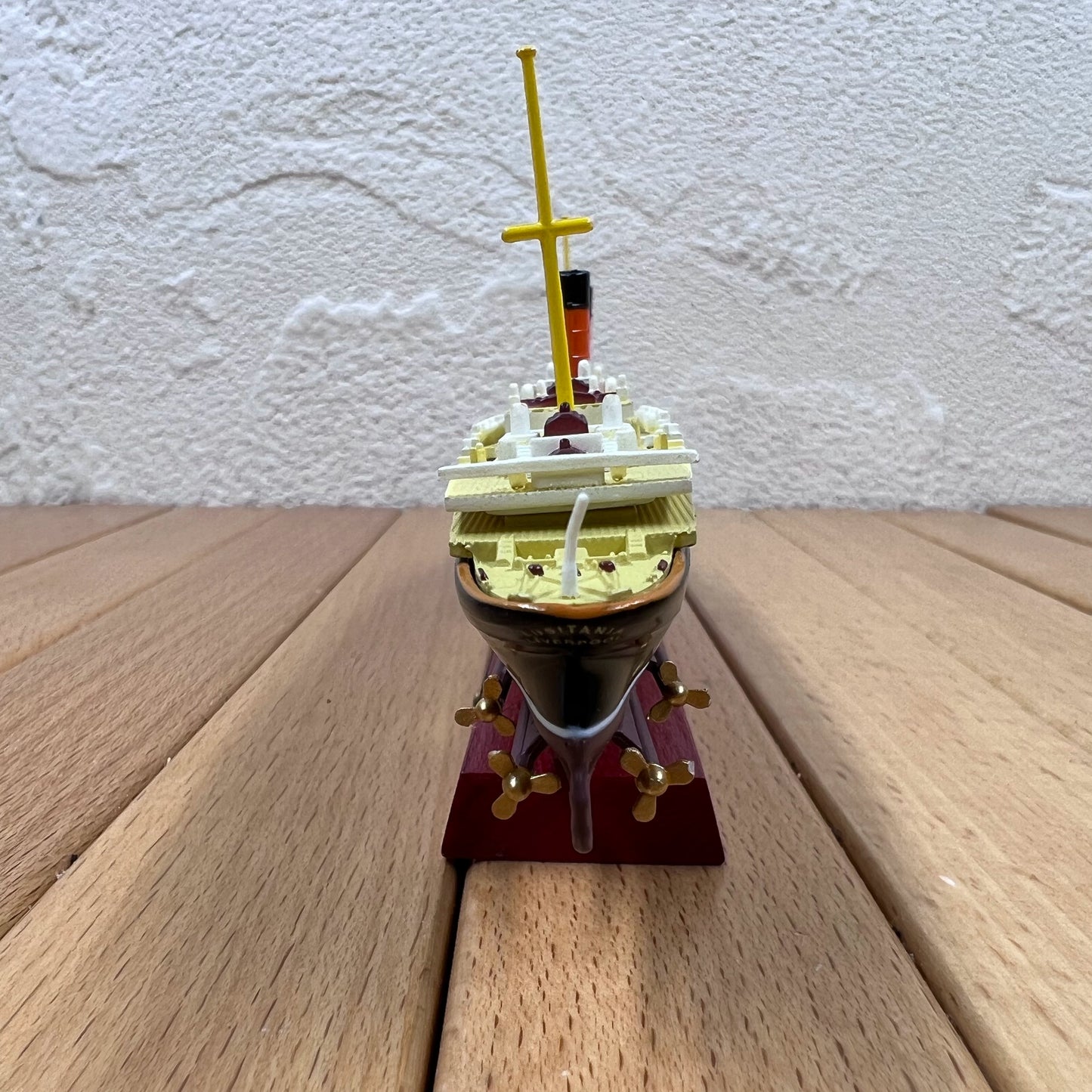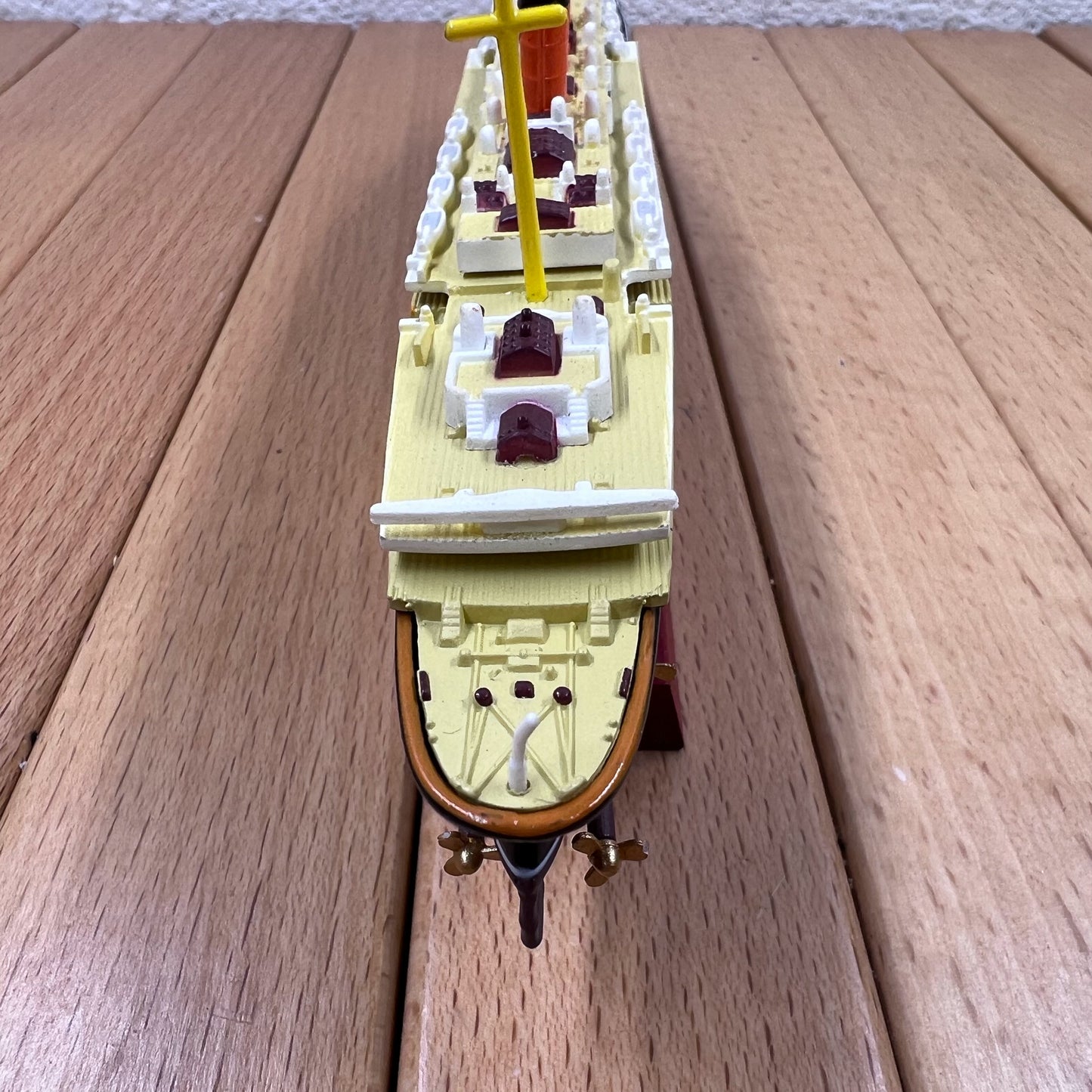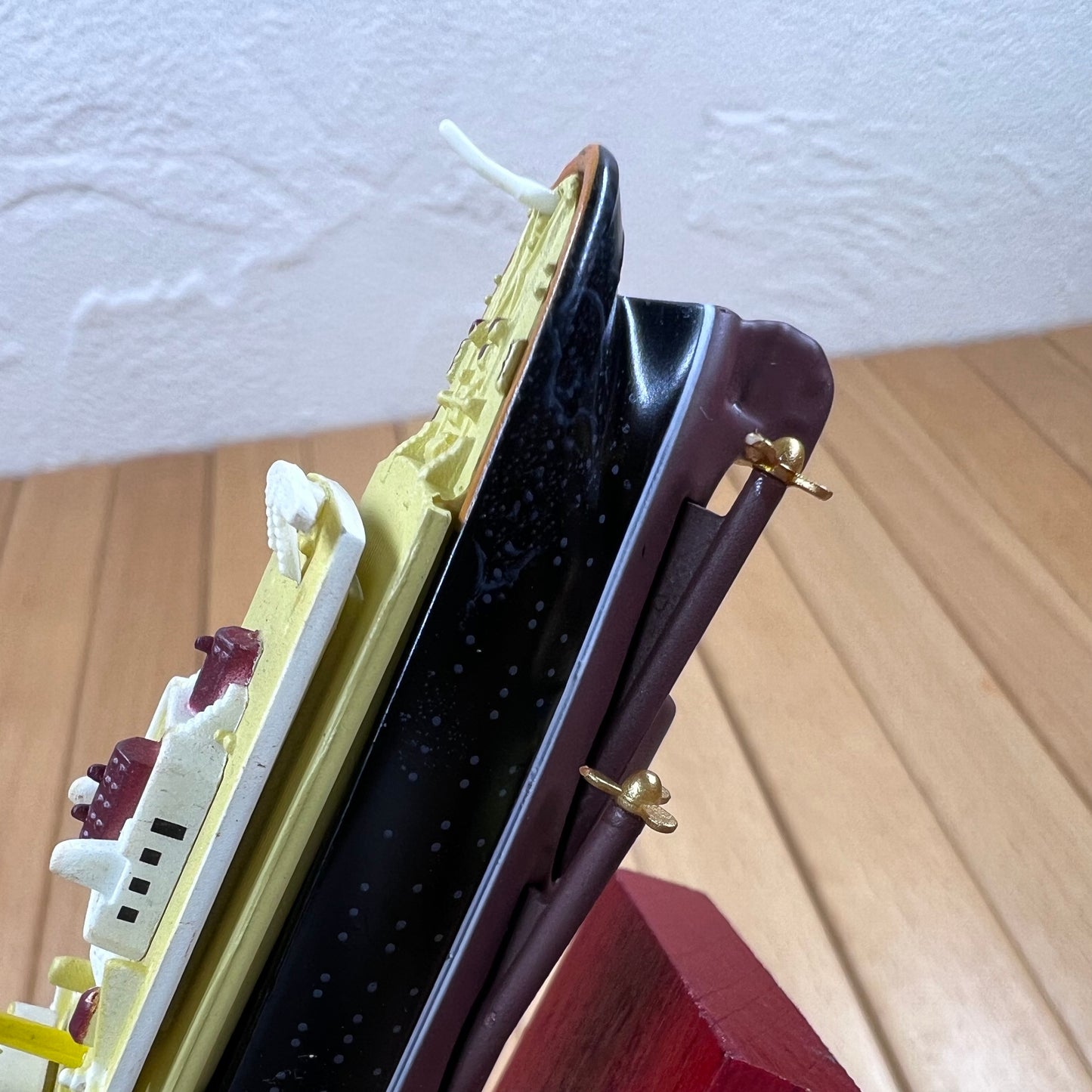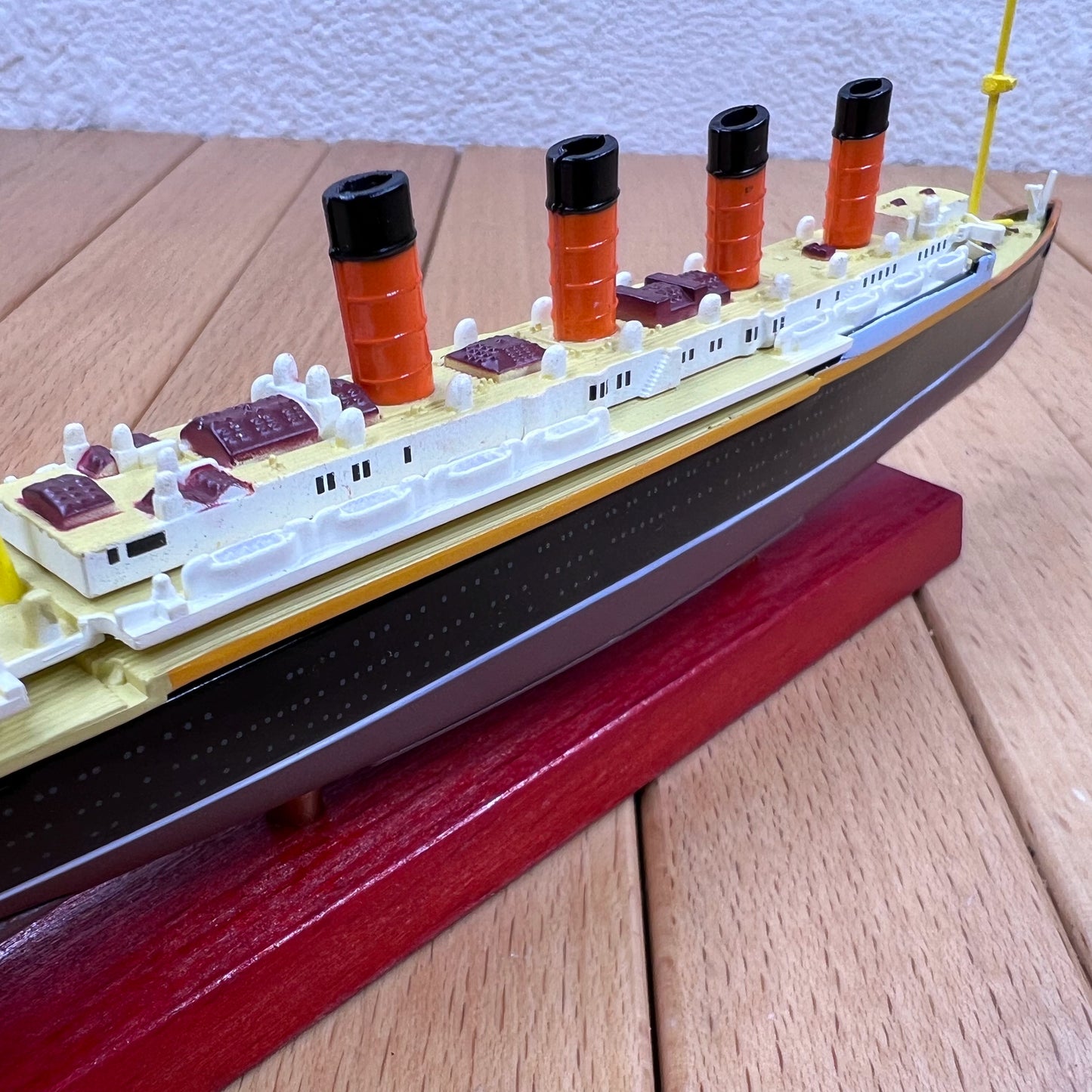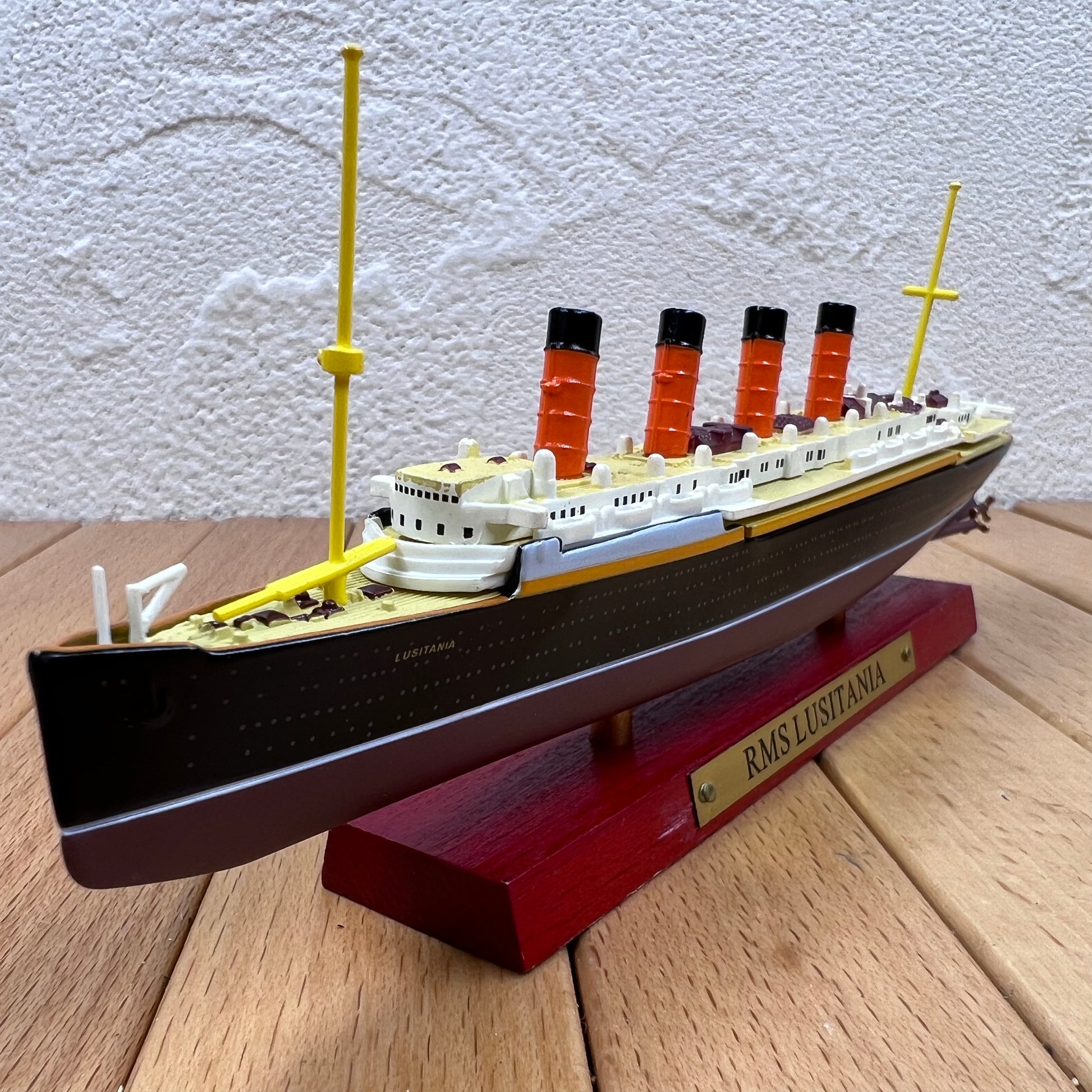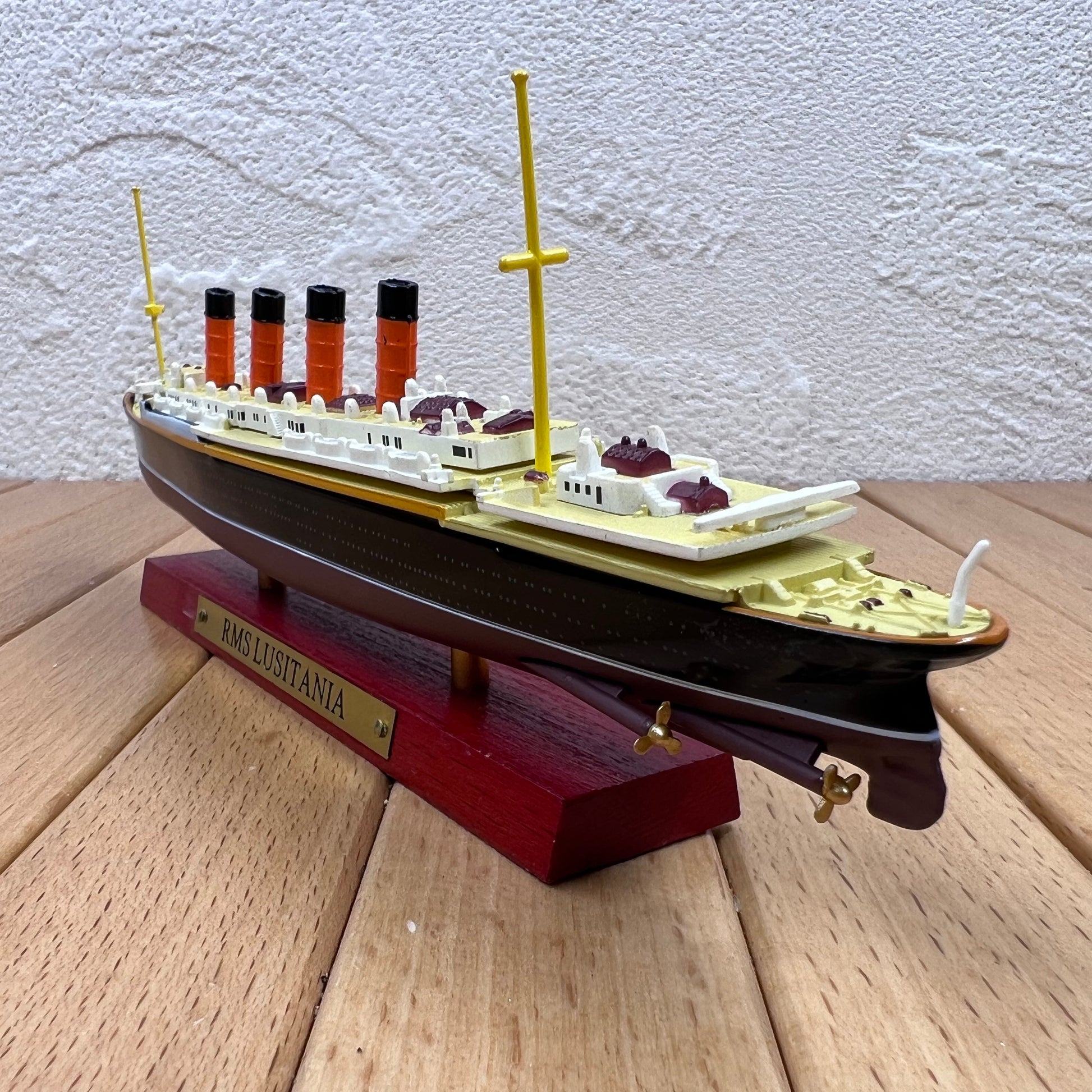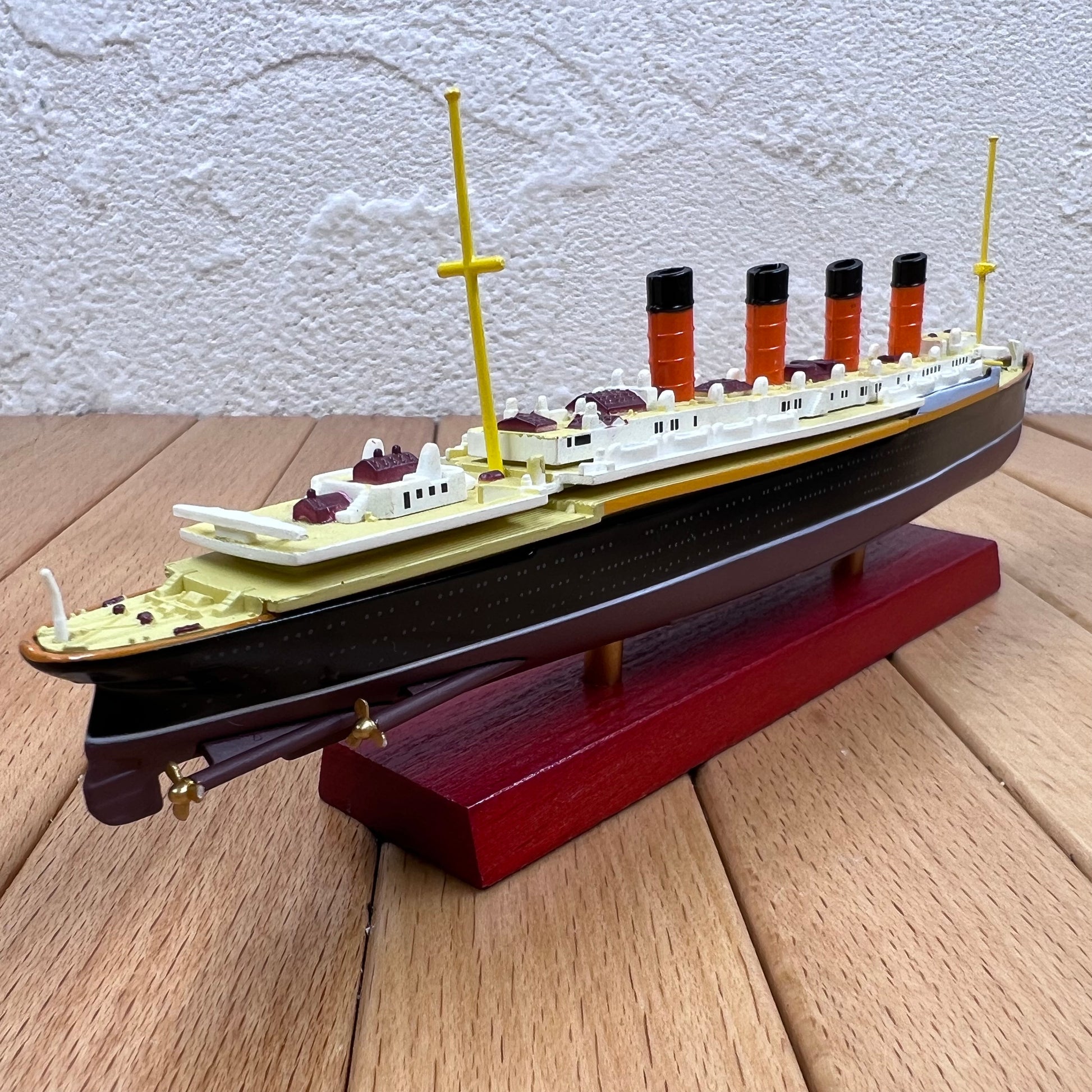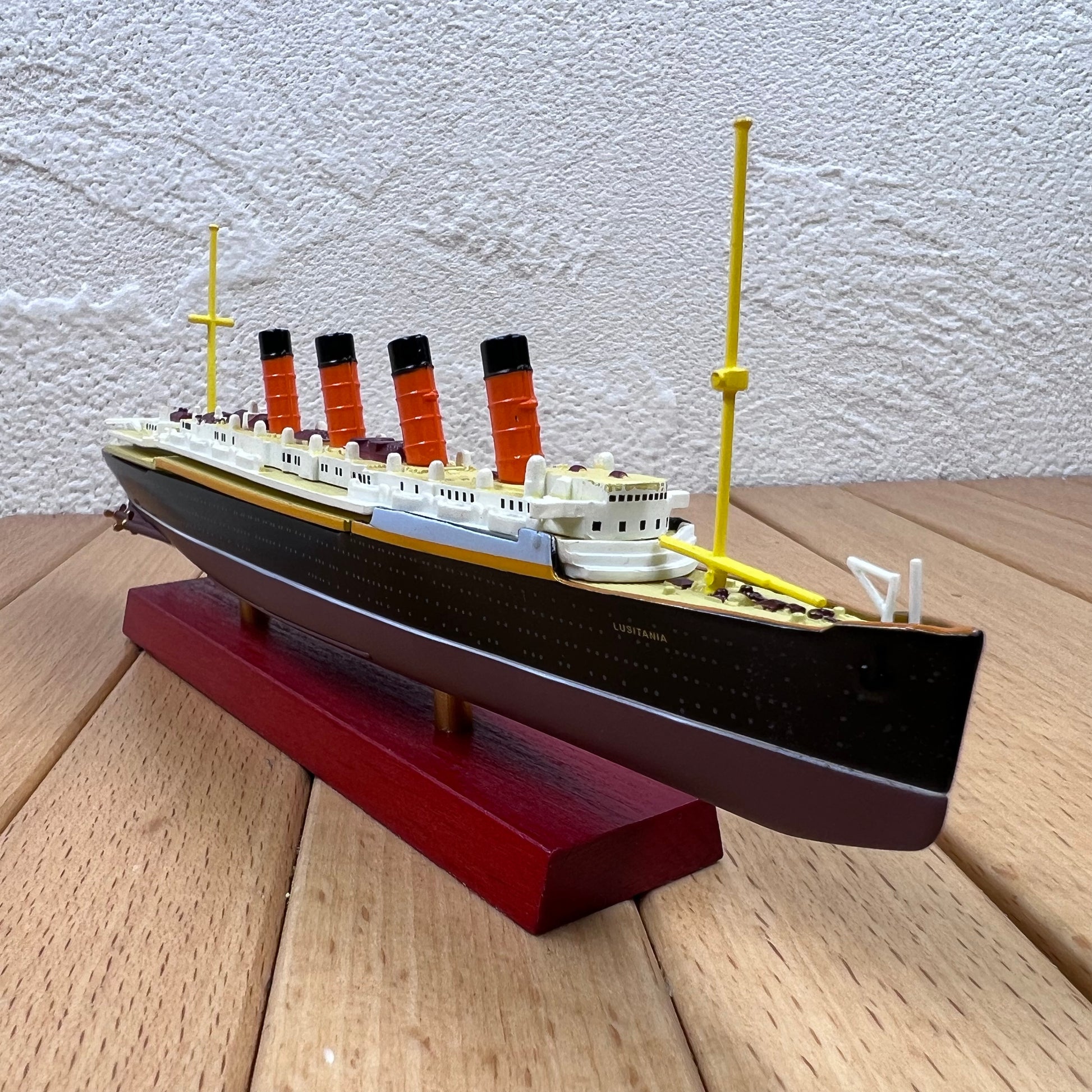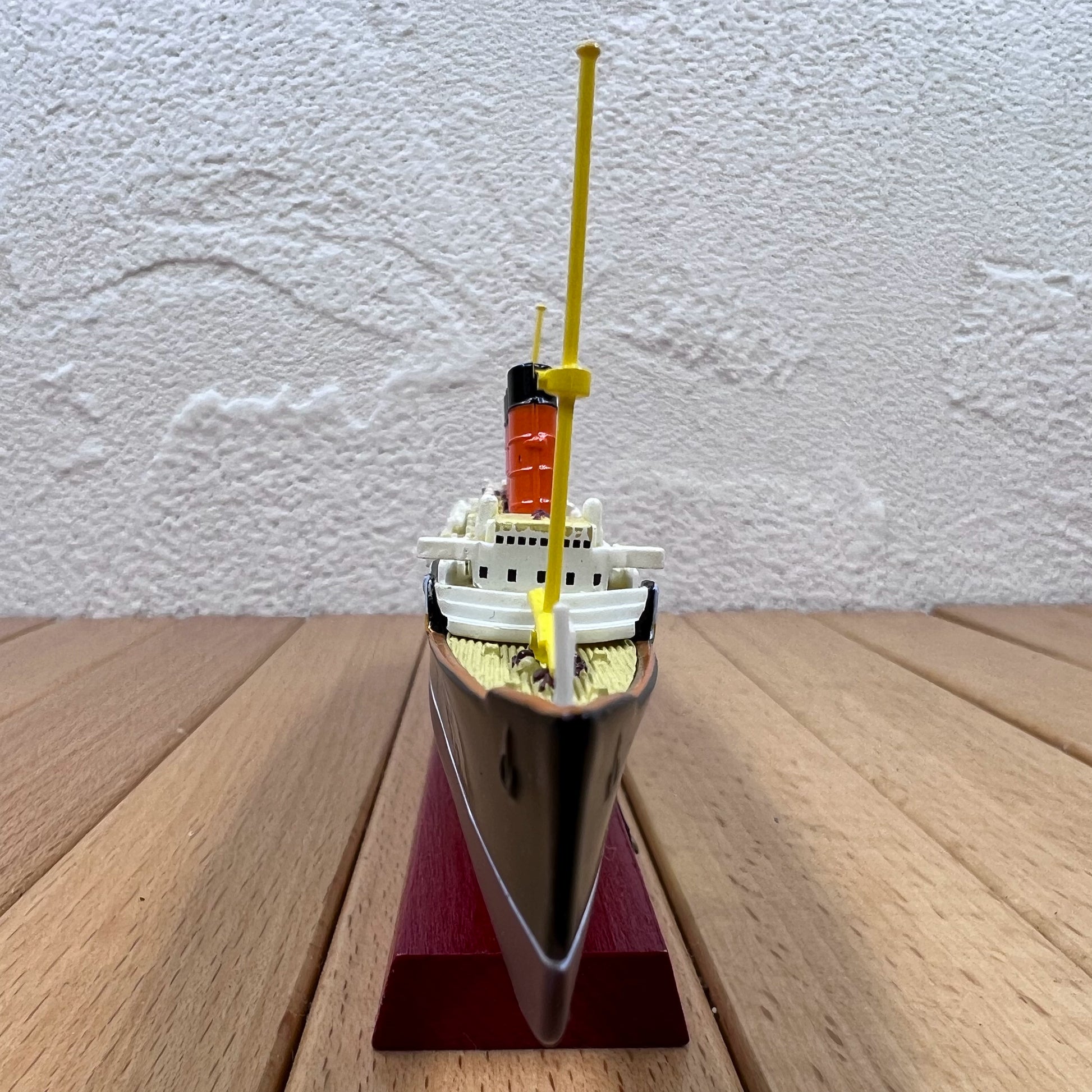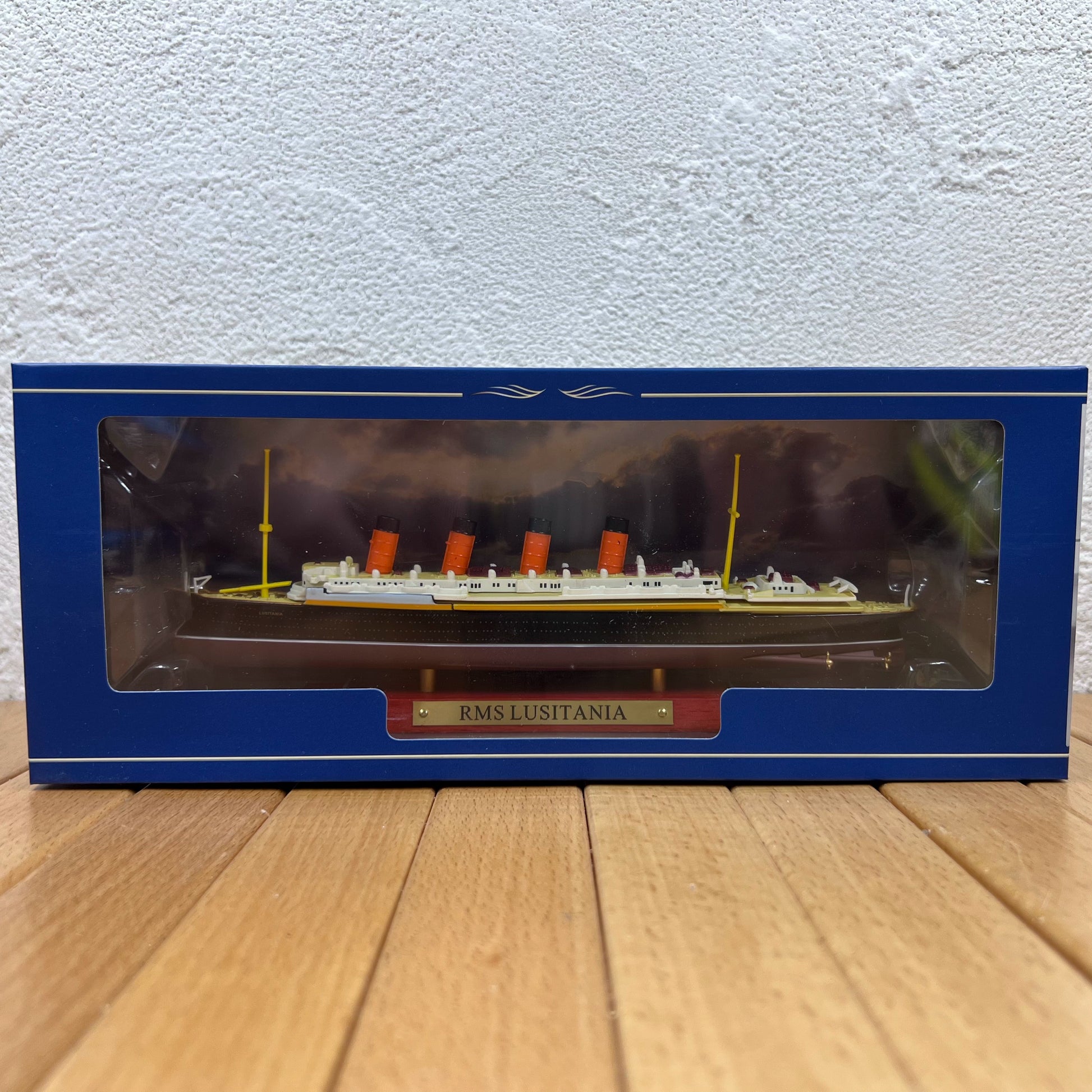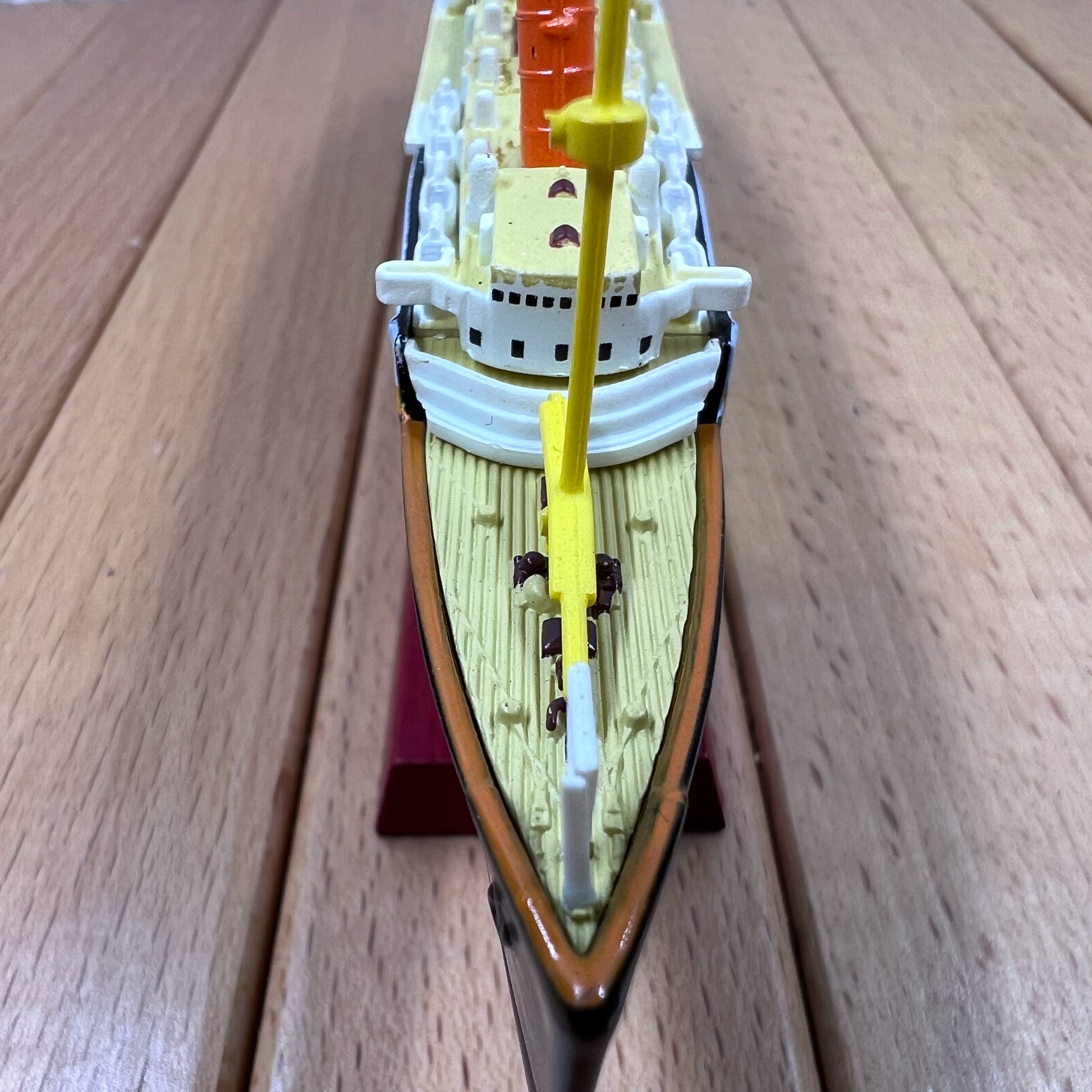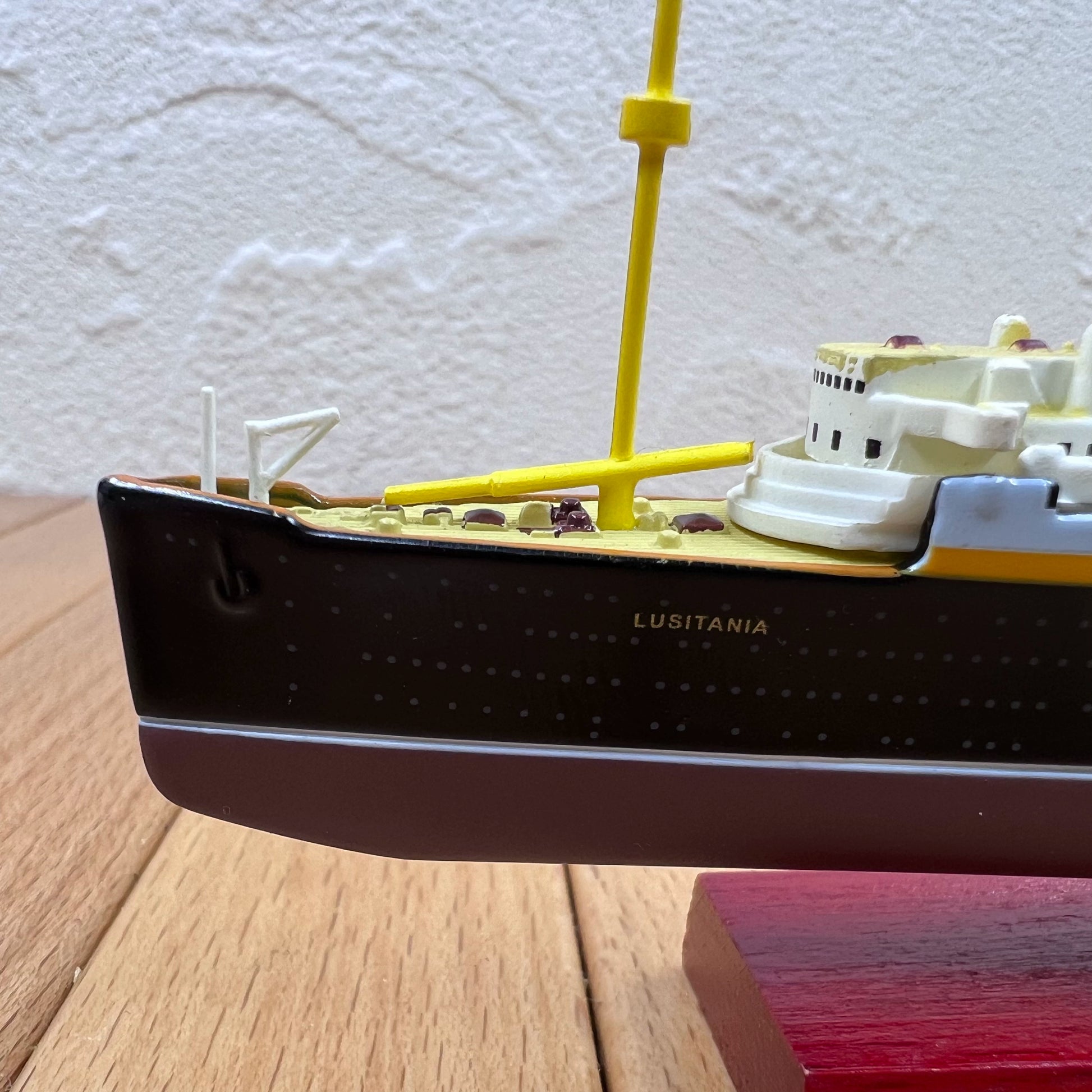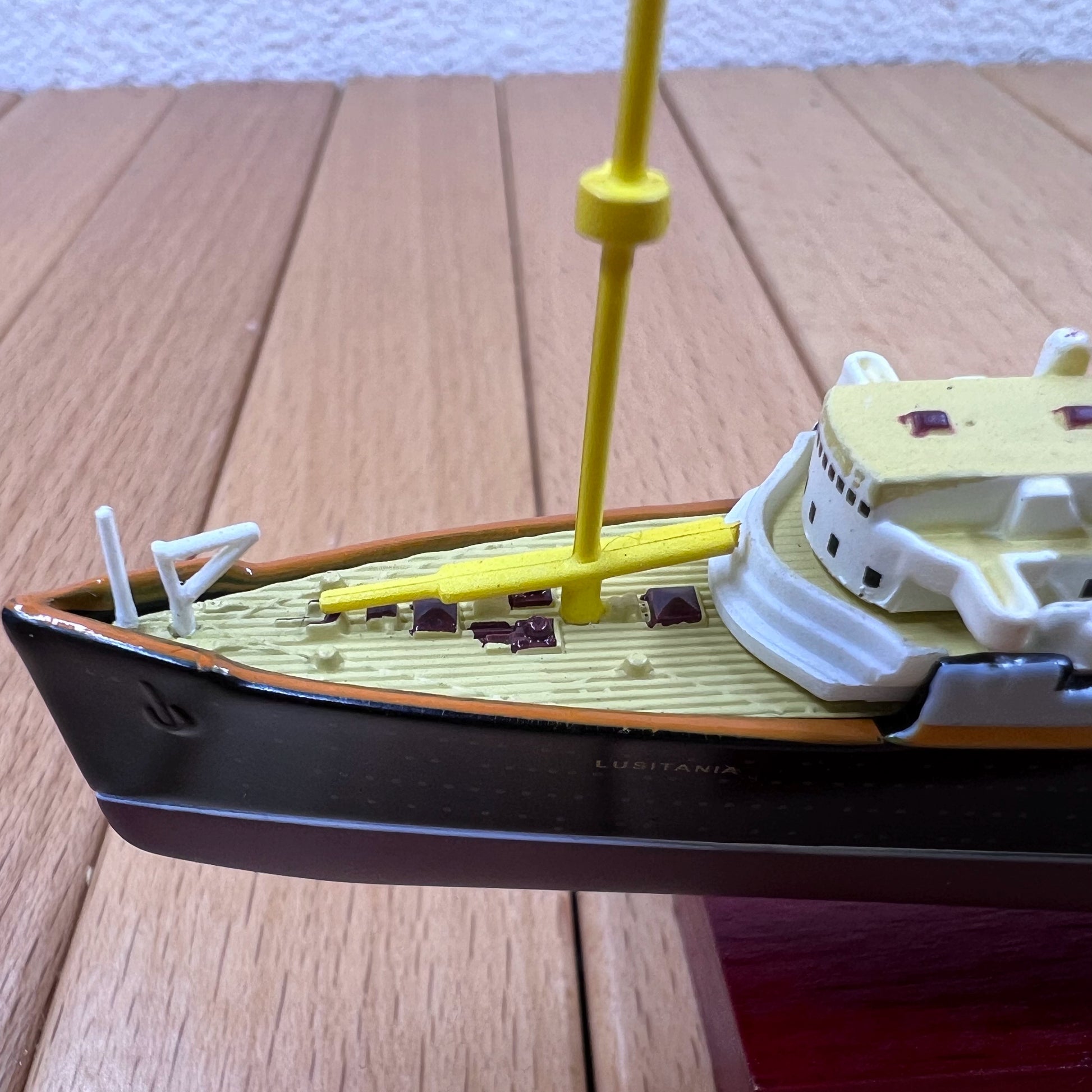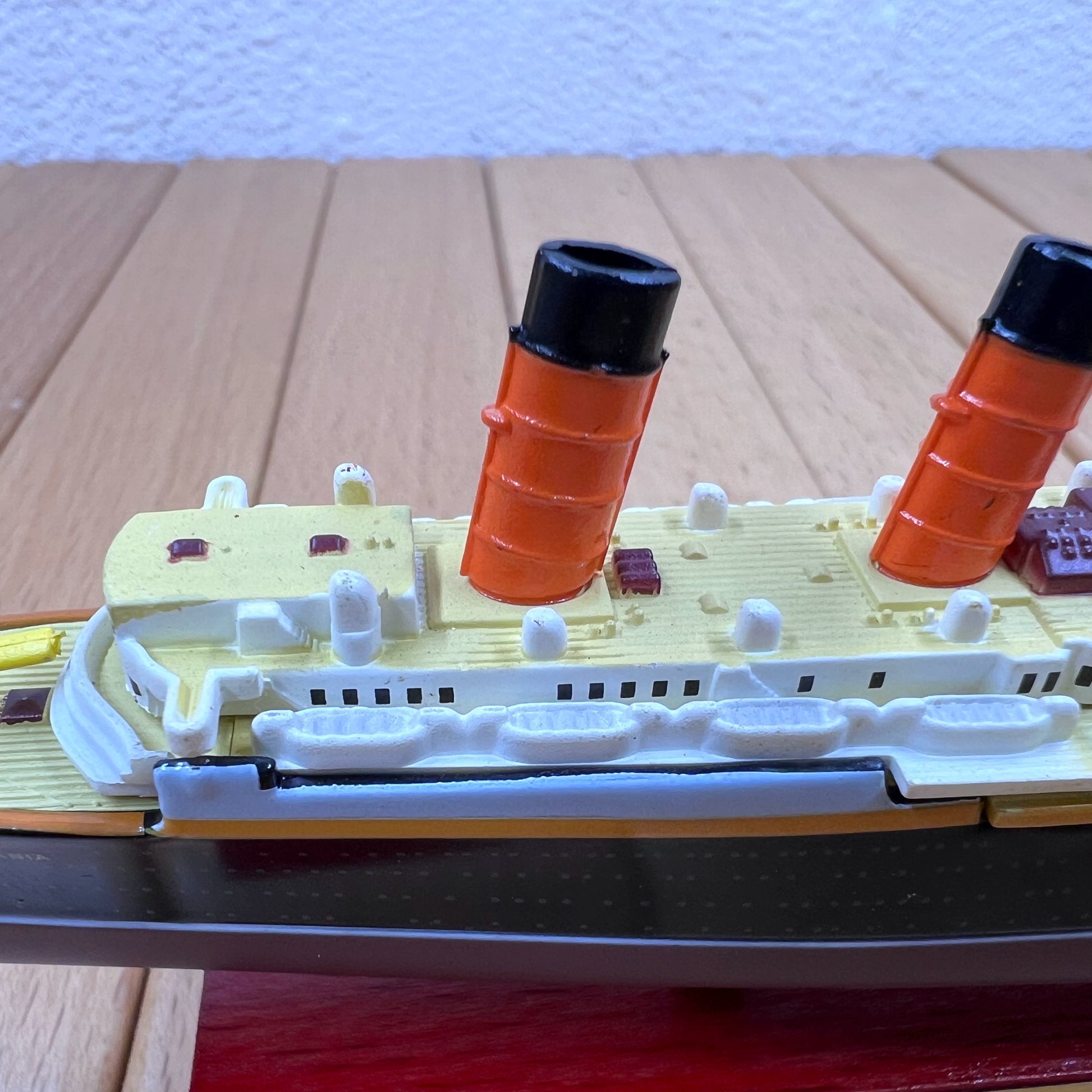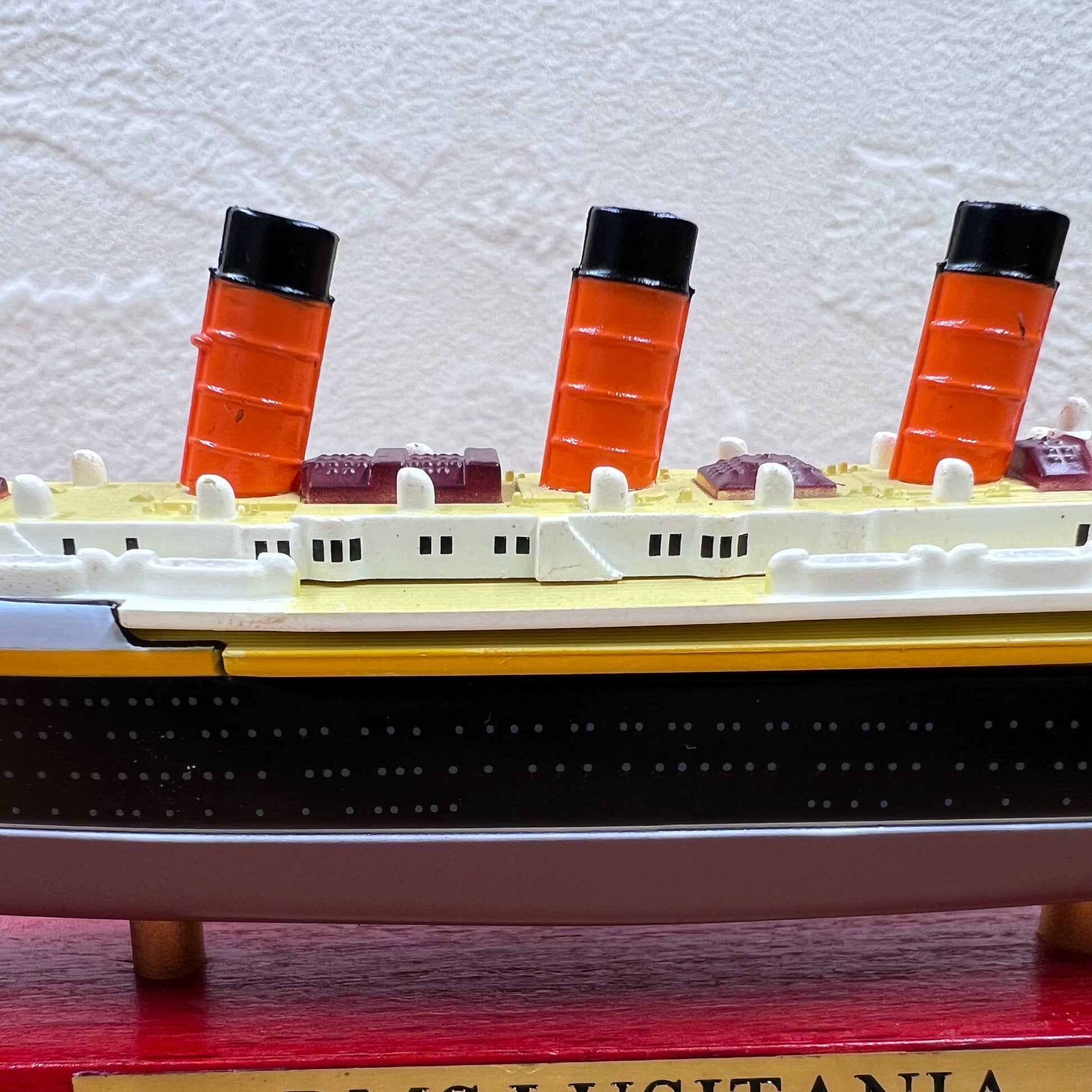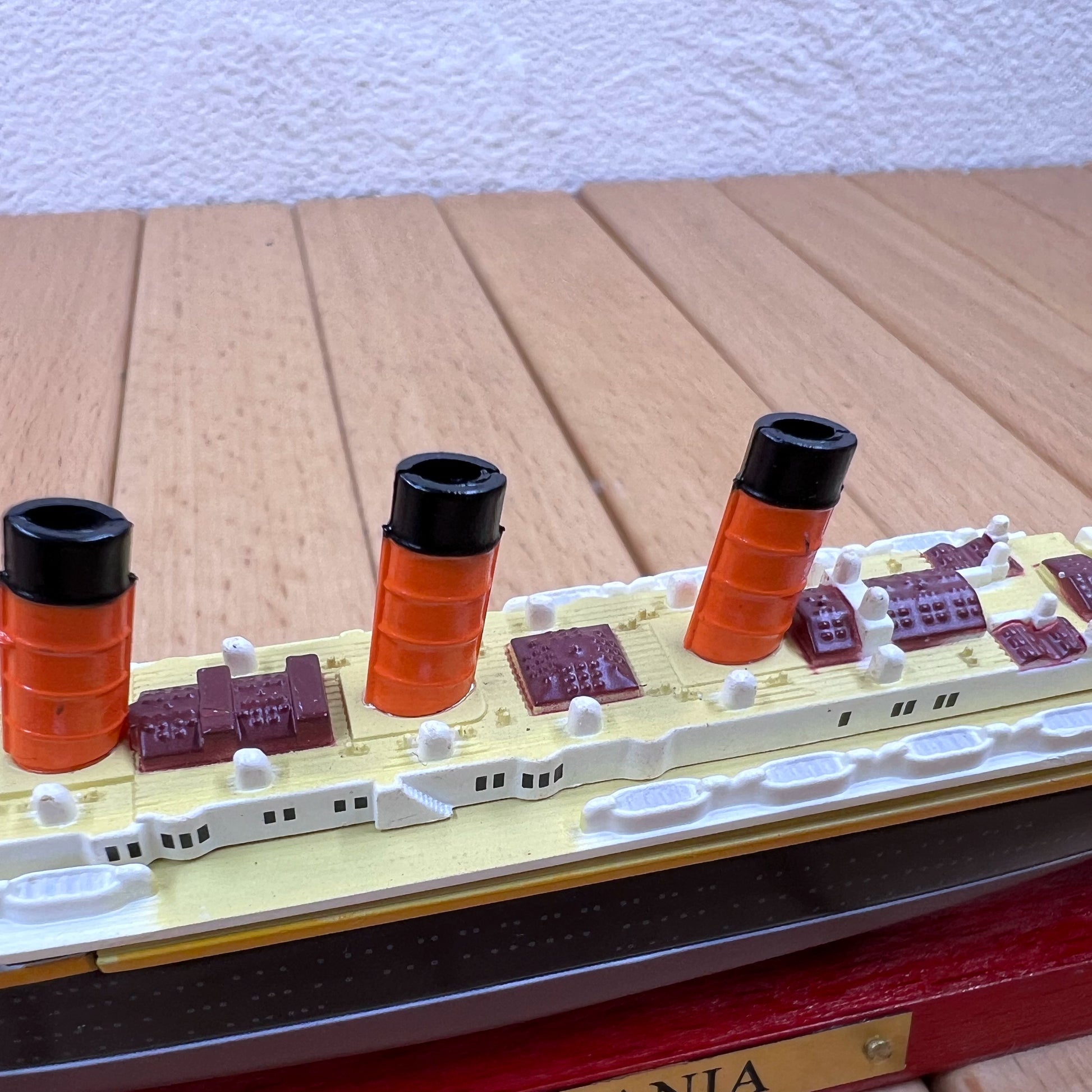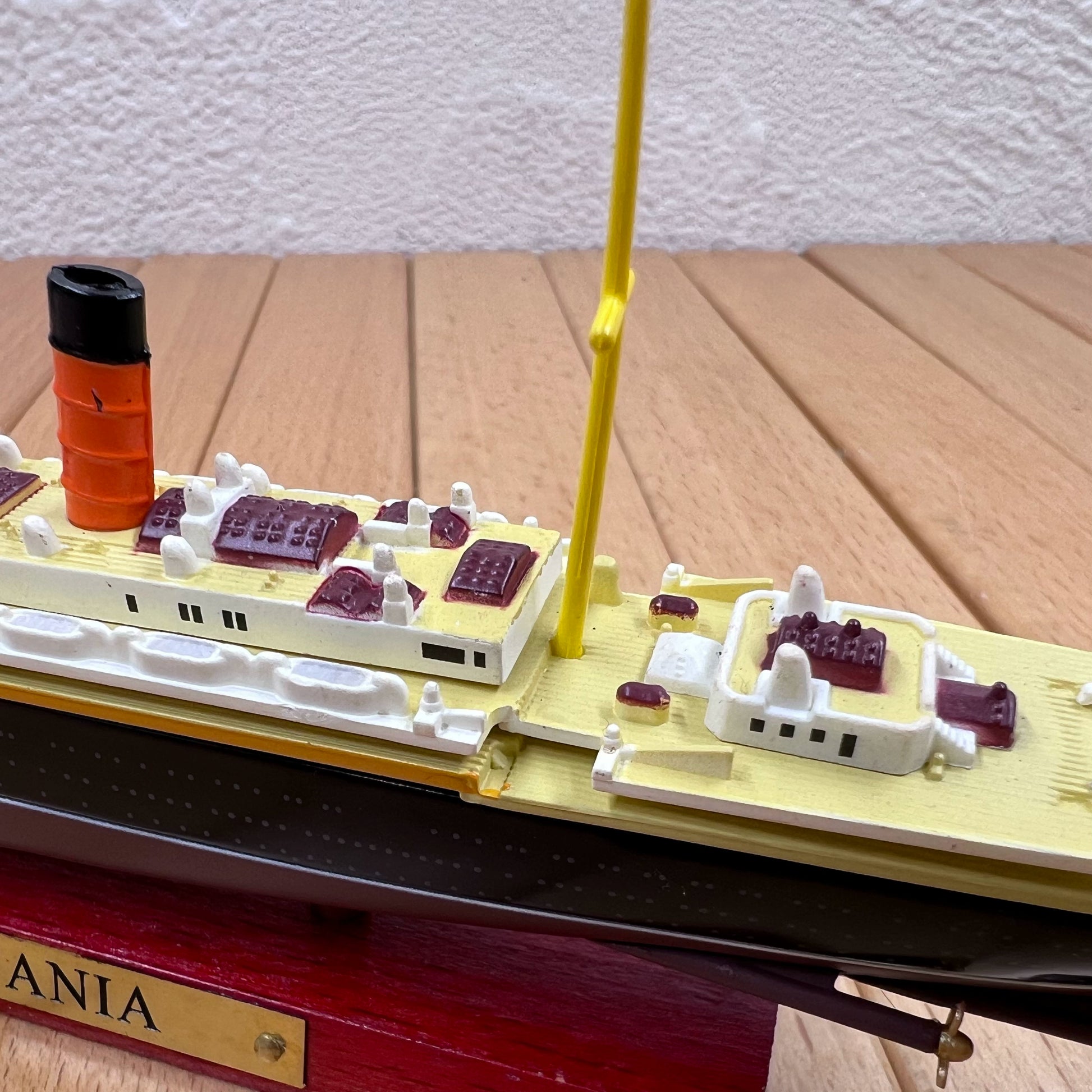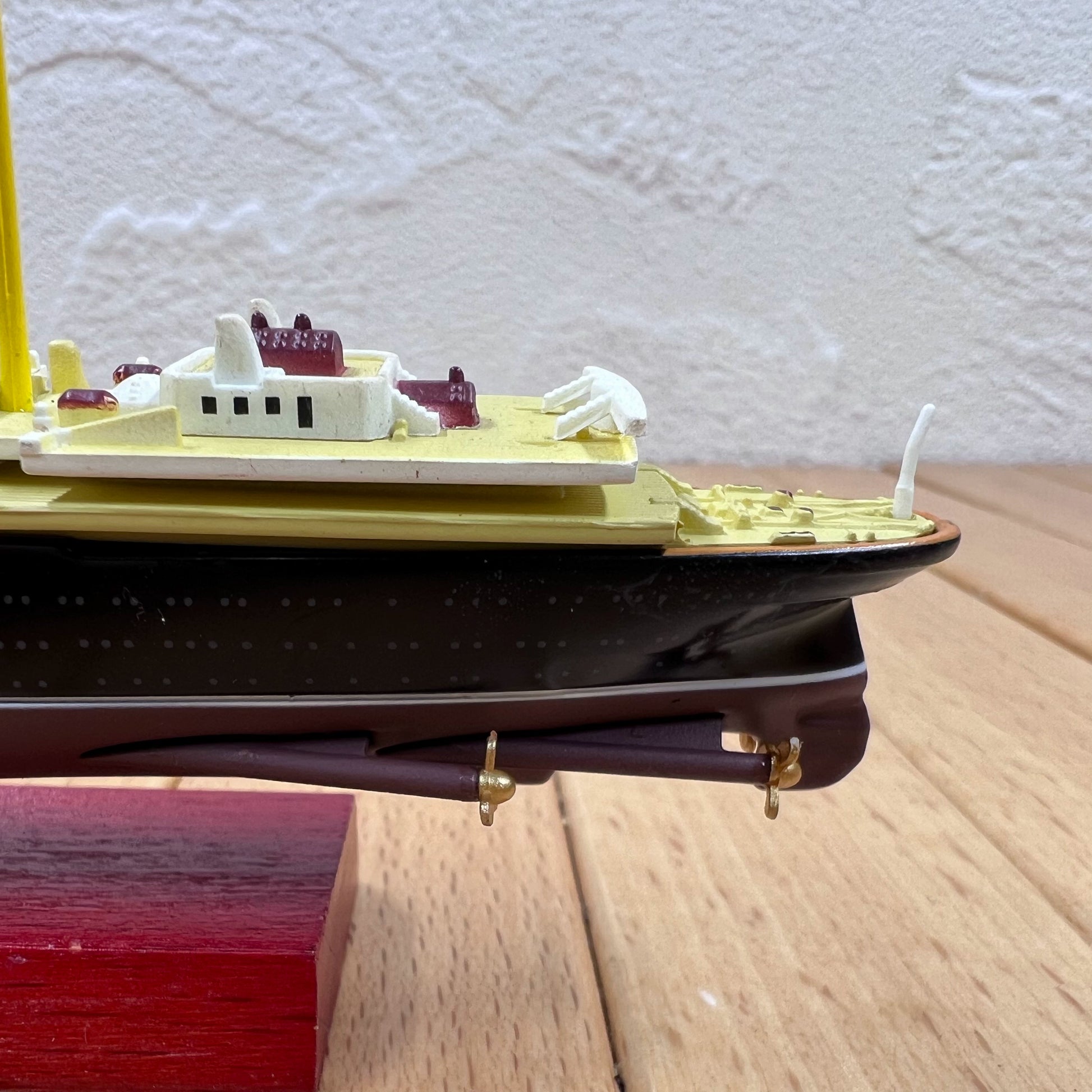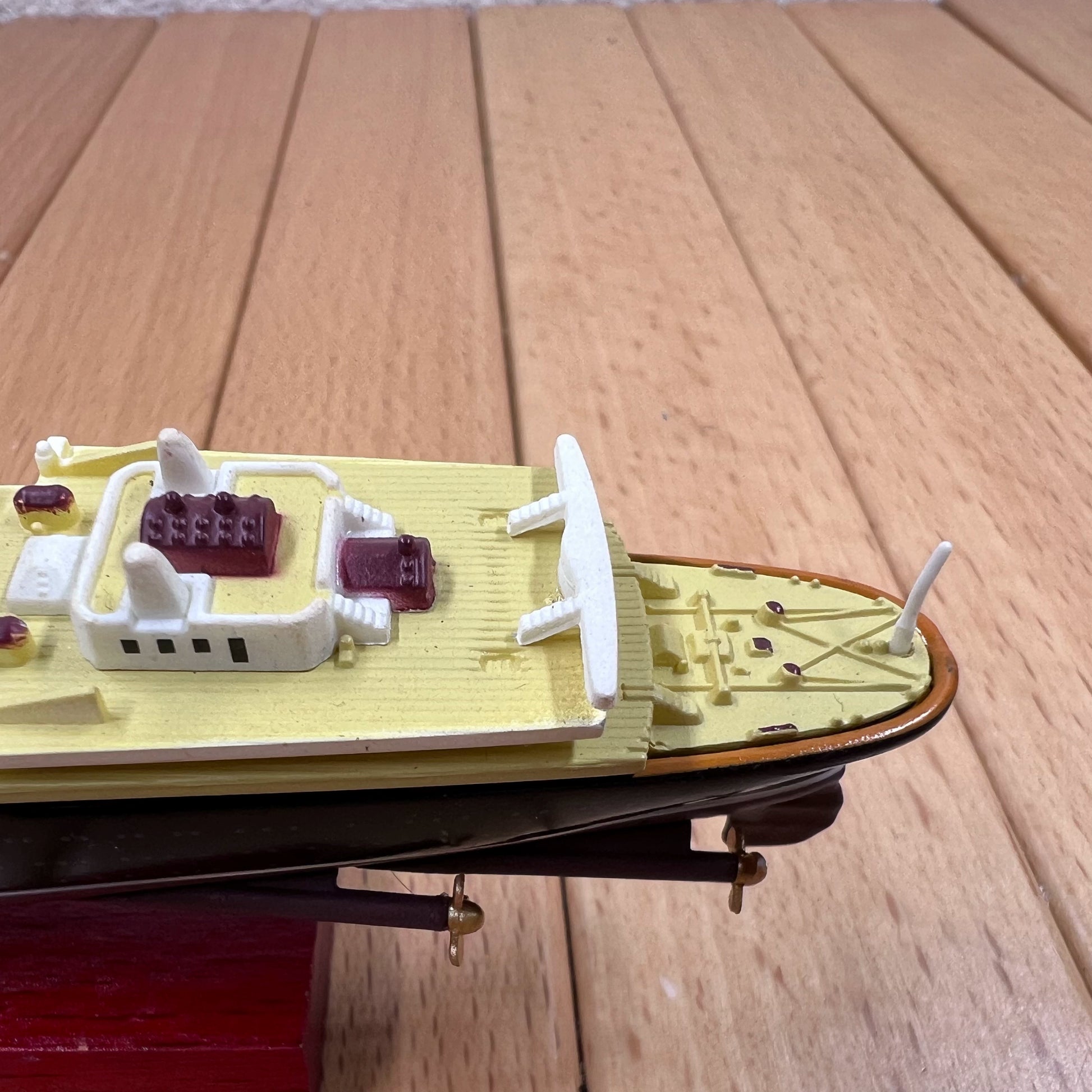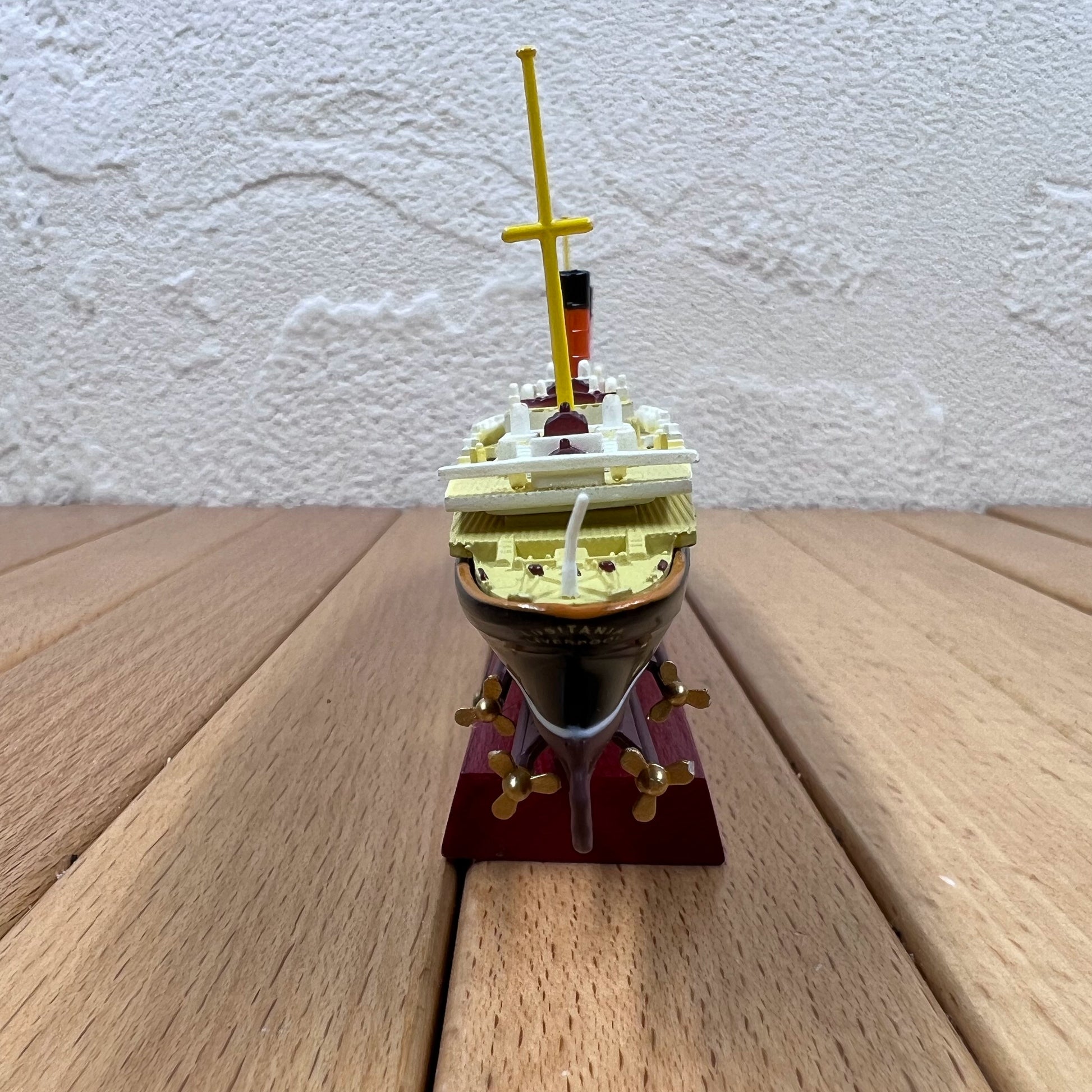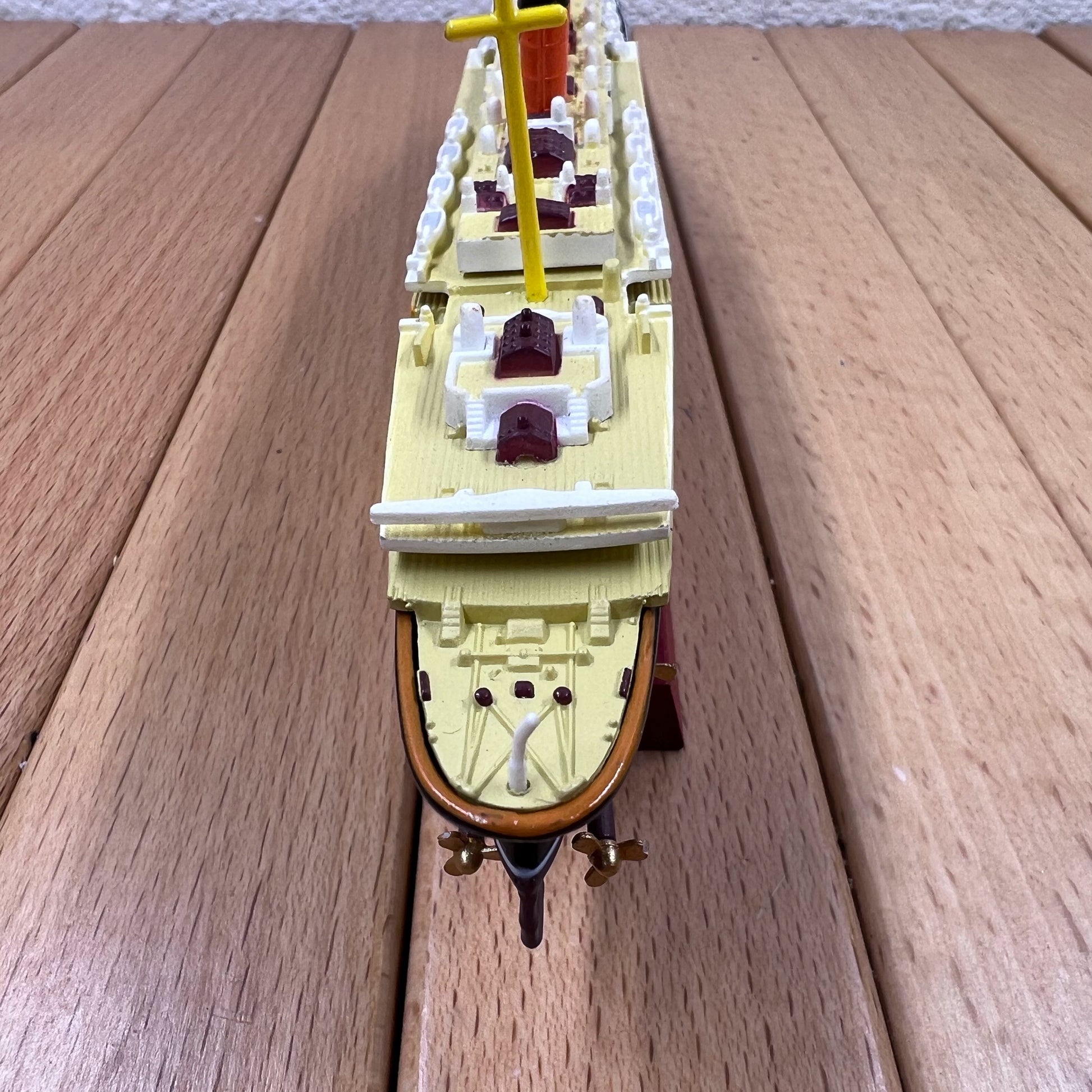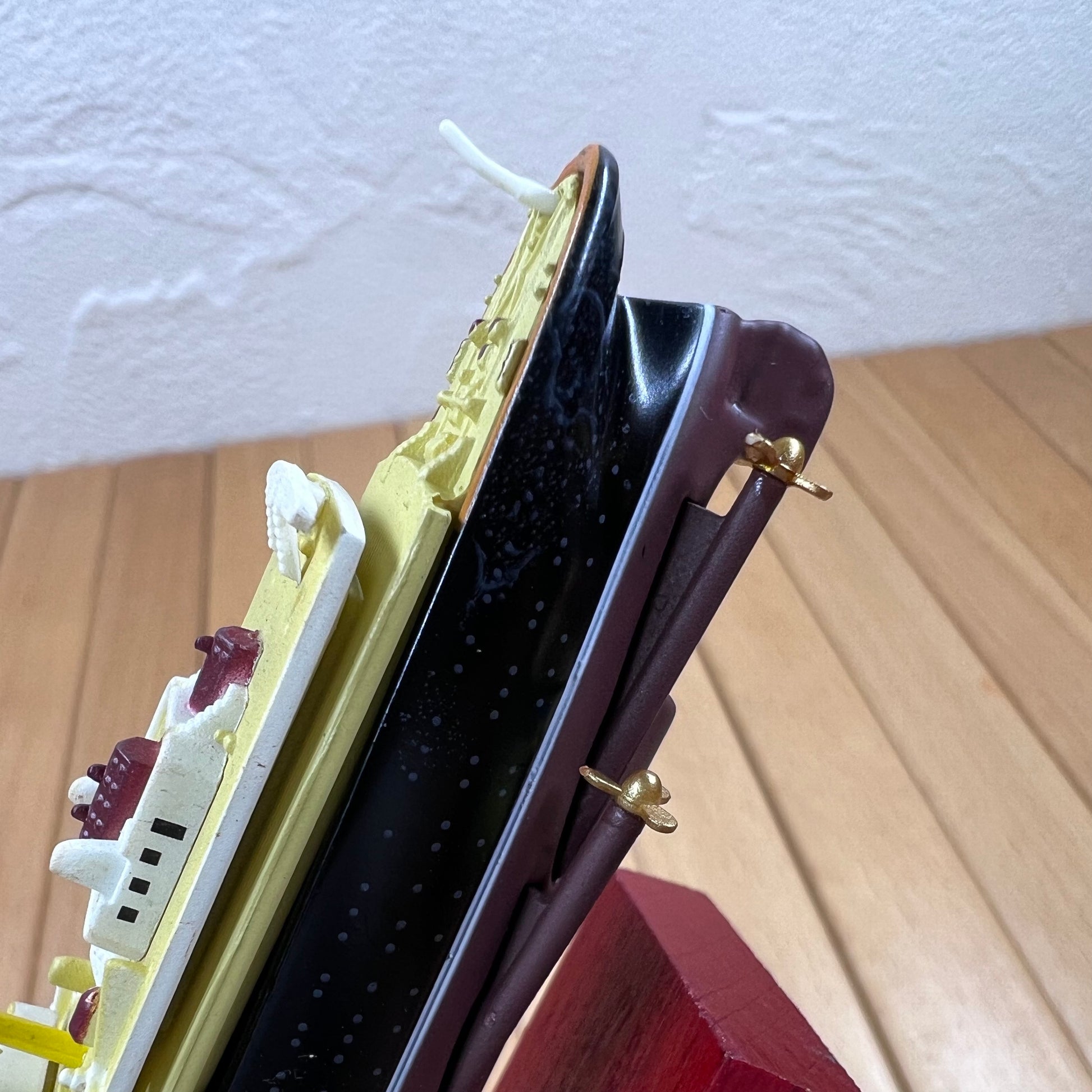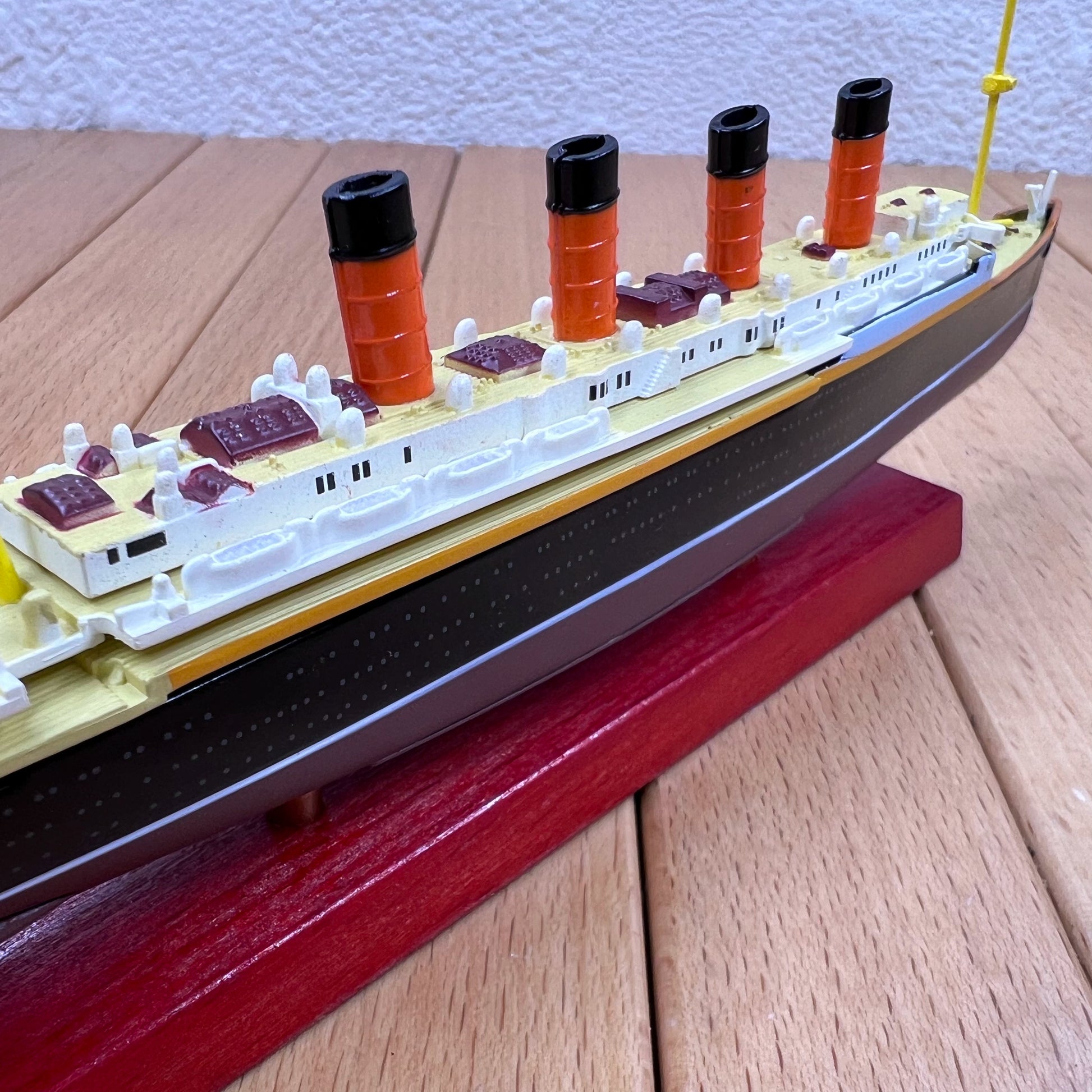old boy hobby
1/1250 Scale RMS Lusitania Ocean Liner Diecast Model Ship
1/1250 Scale RMS Lusitania Ocean Liner Diecast Model Ship
Couldn't load pickup availability
- diecast and pre-painted, ready to display
- material: metal & plastic
- scale: 1/1250
- size: 19*2.1*6 cm
RMS Lusitania (named after the Roman province in Western Europe corresponding to modern Portugal) was an ocean liner that was launched by the Cunard Line in 1906 and held the Blue Riband appellation for the fastest Atlantic crossing in 1908. It was briefly the world's largest passenger ship until the completion of the Mauretania three months later. She was sunk on her 202nd trans-Atlantic crossing, on 7 May 1915, by a German U-boat 11 miles (18 km) off the Old Head of Kinsale, Ireland, killing 1,199 passengers and crew.
The sinking occurred about two years before the United States declaration of war on Germany. Although the Lusitania's sinking was a major factor in building American support for a war, war was eventually declared only after the Imperial German Government resumed the use of unrestricted submarine warfare against American shipping in an attempt to break the Transatlantic supply chain from the US to Britain, as well as after the Zimmermann Telegram.
German shipping lines were Cunard's main competitors for the custom of Transatlantic passengers in the early 20th century, and Cunard responded by building two new 'ocean greyhounds': the Lusitania and the Mauretania. Cunard used assistance from the British Admiralty to build both new ships, on the understanding that the ship would be available for military duty in time of war. During construction gun mounts for deck cannons were installed but no guns were ever fitted. Both the Lusitania and Mauretania were fitted with turbine engines that enabled them to maintain a service speed of 24 knots (44 km/h; 28 mph). They were equipped with lifts, wireless telegraph, and electric light, and provided 50 percent more passenger space than any other ship; the first-class decks were known for their sumptuous furnishings.
The Royal Navy had blockaded Germany at the start of the First World War; the UK had declared the North Sea a war zone in the autumn of 1914 and mined the approaches. In the spring of 1915, all food imports for Germany were declared contraband. In response Germany had declared the seas around the United Kingdom a war zone too, and German submarine warfare was intensifying in the Atlantic. When RMS Lusitania left New York for Britain on 1 May 1915 the German embassy in the United States placed fifty newspaper advertisements warning people of the dangers of sailing on Lusitania. Objections were made by the British that threatening to torpedo all ships indiscriminately was wrong, whether it was announced in advance or not.
On the afternoon of 7 May, a German U-boat torpedoed Lusitania 11 miles (18 km) off the southern coast of Ireland inside the declared war zone. A second internal explosion caused her to sink in 18 minutes, killing 1,199 passengers and crew. The German government justified treating Lusitania as a naval vessel because she was carrying 173 tons of war munitions and ammunition, making her a legitimate military target, and they argued that British merchant ships had violated the cruiser rules from the very beginning of the war. The internationally recognised cruiser rules were obsolete by 1915; it had become more dangerous for submarines to surface and give warning with the introduction of Q-ships in 1915 by the Royal Navy, which were armed with concealed deck guns. The Germans argued that Lusitania was regularly transporting "war munitions"; she operated under the control of the Admiralty; she could be converted into an armed auxiliary cruiser to join the war; her identity had been disguised; and she flew no flags. They claimed that she was a non-neutral vessel in a declared war zone, with orders to evade capture and ram challenging submarines.
However, the ship was not armed for battle and was carrying hundreds of civilian passengers, and the British government accused the Germans of breaching the cruiser rules. The sinking caused a storm of protest in the United States because 128 American citizens were among the dead. The sinking shifted public opinion in the United States against Germany and was one of the factors in the declaration of war nearly two years later. After the First World War, successive British governments maintained that there were no "munitions" (apart from small arms ammunition) on board Lusitania, and the Germans were not justified in treating the ship as a naval vessel.
--copied from Wikipedia
Share
